
MAY 2024 28 LEAP TO LONGER CRUISES 32 KIRSTEN NEUSCHÄFER PART 2 36 TENDER SAIL RIG

J/Sport - J/70 J/80 J/88 J/9
J/99 J/111 J/121

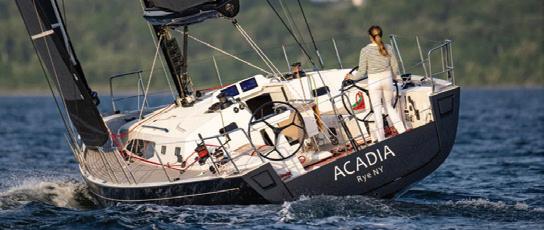

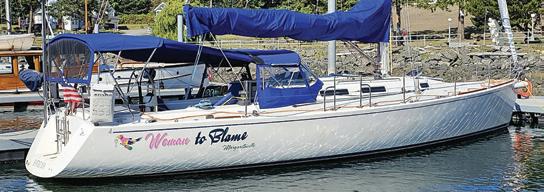
1996 43’ J/130 • $149,000
This has to be the nicest and best equipped J/130 ever. Newer sails, electronics, sat TVs, dodger and much more. She is a must see and at our dock.
4, MJM 42
J/Elegant - J/112e J/122e J/45 MJM Series Yachts

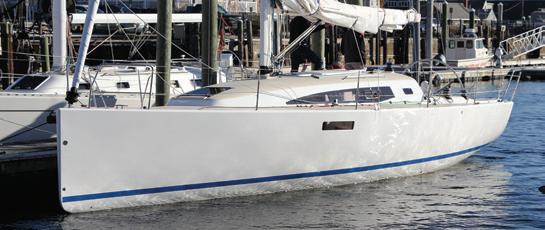
• Family Cruising In Comfort & Style
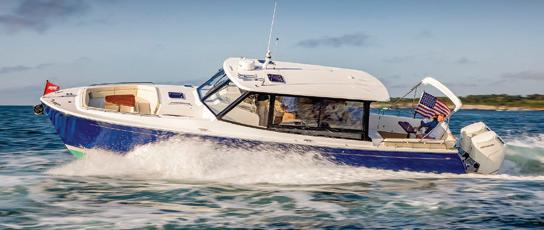
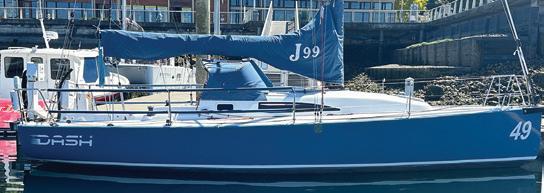
2020 32’ J/99 • $279,000
Dash is offshore ready for the next Hawaii race, Newport Bermuda, or a Northwest cruise. She is equipped for double handed or fully crewed ocean racing. Just bring provisions and a first aid kit and you’re ready to go. J/45 • Early 2025 Delivery Available

J/40 1987 • $65,000
Comfort & Speed For Couples That Cruise Across Oceans. The J/40 was the first bluewater offshore cruising boat built by J/Boats.
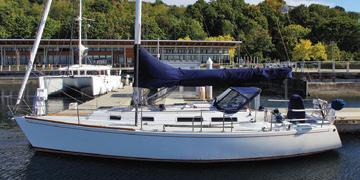
1992 J/35c • $79,000
Updated popular cruising J/Boat. Newer cushions, main cover, cockpit cushions, dodger and more. She is available for lease back in the Seattle Sailing Club.

1999 36’ C&C 110 • $89,500
Cruise ready 3 cabin performance cruiser. Easy to sail and a comfortable cruiser with Webasto Heater and a Macerator head she is ready to go.
Sailnorthwest.com • 206-286-1004 • sales@sailnorthwest.com
J/112e
MJM 3, MJM 35,
Shilshole Marina Sales Office • www.sailnorthwest.com • 206-286-1004 Brokerage Boats • We Are Selling Boats and Need Listings NEW J/BOATS • 2024 Delivery Slots Available MJM Yachts • Performance and Luxury J/9 •
On Order For Spring Delivery PRICE REDUCED
MJM
Hull #52




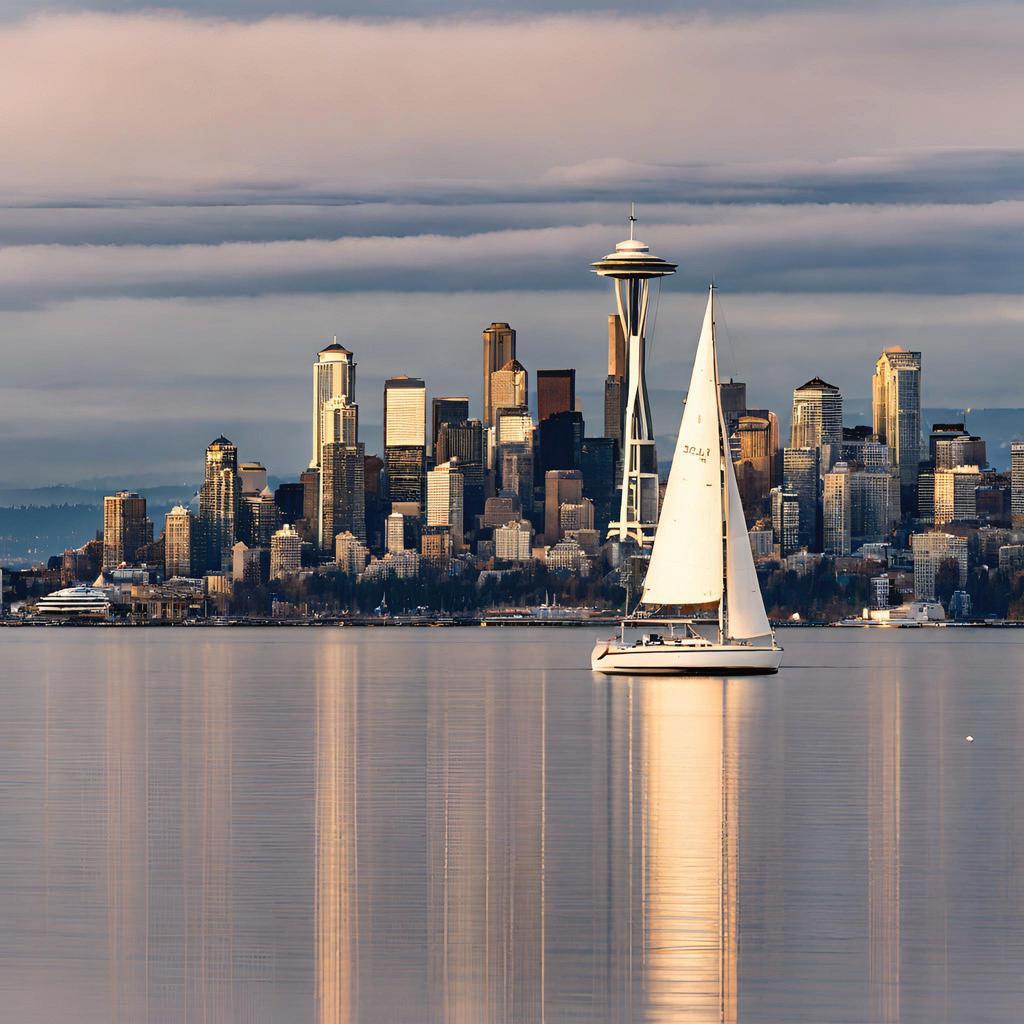



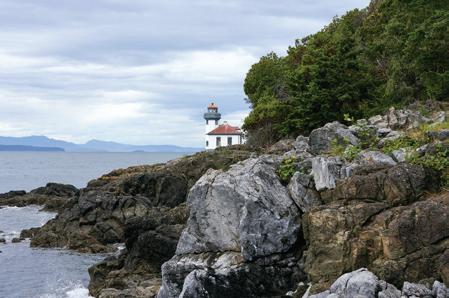

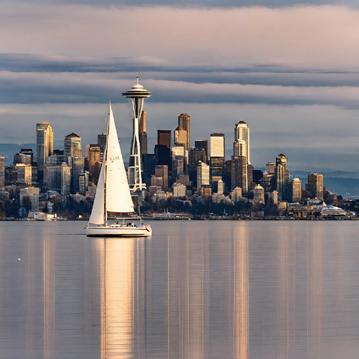

MtEmbark on your next sailing journey with our Cruise N Learn (ASA 103 + ASA 104 combo) sailing courses in the stunning backdrop of La Paz, Mexico! Say goodbye to the spring gloom as you immerse yourself fully in these comprehensive lessons on the picturesque Sea of Cortez.
Experience the breathtaking beauty of the San Juan Islands aboard our liveaboard Cruise N Learn (ASA 103 + ASA 104 combo) or ASA 104 Bareboat Chartering class! Elevate your sailing expertise and earn your certifications to confidently captain boats up to 45 feet
Nestled within the scenic Shilshole Marina, our docks boast stunning views of the majestic Olympic mountain range. Drop by to explore our diverse range of classes and membership options, or peruse our Pro Shop for all your sailing needs.
MOC.GNILIASELTTAES.WW
within
stunning views of the Olympic mountain
by to explore our range of classes and membership options, or peruse
for all your sailing C O N T A C T U S : WWW.SEATTLESAILING.COM 206-782-5100 7001 SEAVIEW AVE NW STE 130
Drop
Shop
L a P a z , M e x i c o A n a c o r t e s , W A S e a t t l e , W A
toSail S E A T T L E Sailing Club
SAILING SIMPLIFIED Zeus S Chartplotter

With its unique Sailing Modes, Zeus S is the next generation of chartplotter. Available in three sizes (7”, 9” & 12”), it’s designed specifically to make sailing easier, giving you all the information you need in an easy-to-interpret way. Experience enhanced sailing features, a new, intuitive interface, and clear, detailed C-MAP® charting for the safest, easiest navigation.
Sailing Modes
See the data you need, when you need it in a simple and clear display. Choose from Sailing Modes for Cruising or Racing and get all the relevant information you need for that situation.
Detailed C-MAP® Charts
C-MAP DISCOVER™ X and REVEAL™ X charts feature highly accurate data with simple viewing options for clear and easy navigation. Tide and current projections improve trip planning and route plotting, further supported by our fastest-ever autorouting. Plus, get quick, one-touch access to POIs, tides, channels, and more.
Enhanced Sailing Features
Improve your sailing with easy to interpret pointers from B&G®’s award-winning sailing features for cruising and racing, with updates to SailSteer™, Laylines, StartLine, Routes, Racing and many more. C-MAP powered Safety Alerts guard against grounding and dangerous objects.
Intuitive Interface
Zeus S makes data easy to read, and even easier to digest. The interface is designed to feel familiar – with a new Set-up Wizard to get you started, and helpful feature tips to guide you along the way. Get hassle-free software updates, on- and offthe water trip planning, and clear, accurate chart displays across your Zeus S, App and Web.
For the complete line of innovative B&G marine electronics please visit fisheriessupply.com/b-and-g-electronics
48º NORTH 4 MAY 2024
Call us 800.426.6930 1900 N. Northlake Way, Seattle FisheriesSupply.com
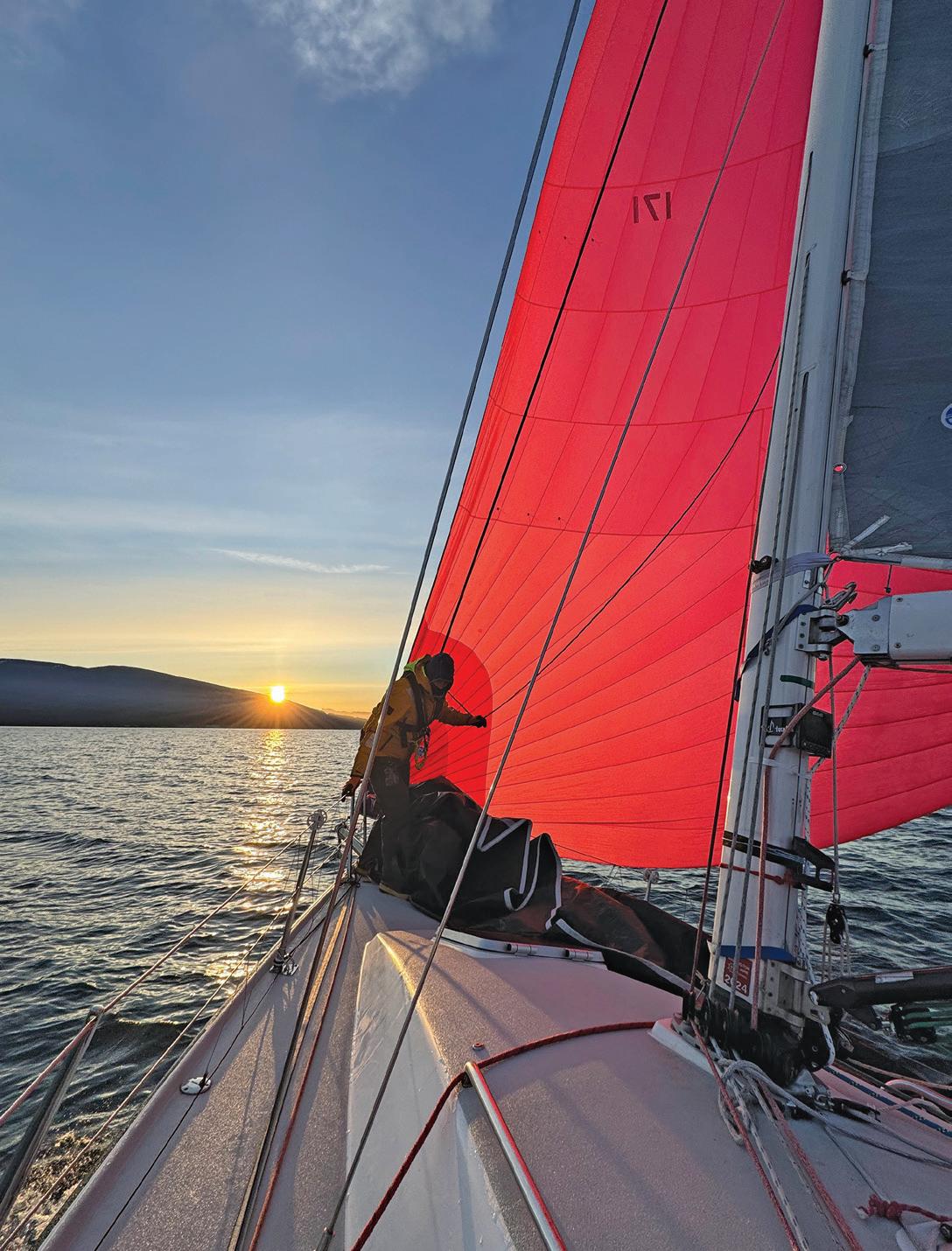
FEATURES
28 Ready... Go!
Finding your footing for the jump to extended cruising.
By Andy Cross
32 Sea Adventurer: Kirsten Neuschäfer, Part 2
The renowned circumnavigator shares stories from her GGR win.
By Joe Cline
36 Tender Feelings
There’s fun to be had retrofitting dinghies witih sailing rigs.
By Emma Biron
COLUMNS
20 Close to the Water: Looping the Island
A small boat cruise around the South Sound’s Harstine Island.
By Bruce Bateau
22 Three Sheets NW: The Drawers of Perception
This project leads to boaty enjoyment and understanding.
By Marty McOmber
24 Shifting Gears: How Did We Get Here?
Considering a trip to Alaska brings to mind previous adventures.
By Dennis Bottemiller
RACING
39 STYC Blakely Rock Benefit Race
A great battle among the J/105 fleet during a fun spring sail.
40 First of Many: Spyhop’s Southern Straits Race
An experienced Puget Sound crew takes on the distance classic.
42 Red Ruby Project: Spi Ouest
Kickstarting a big year for these PNW sailors racing abroad.
44 CYC Seattle Spring Regatta
Big turnouts and bigger fun across small and big boat weekends.
46 CYC Pulley Point Race
Wrapping up an epic Center Sound Series with lighter wind.
48º NORTH 5 MAY 2024
ON
THE COVER: Bruce Bateau sails his Ian Oughtred designed Arctic Tern, Row Bird , in Case Inlet with Mount Rainier in the background. Photo by Galen Piehl.
MAY 2024
Background photo courtesy of Dennis Lussier.
CONTENTS
Editor
One day before this magazine was sent to press, Seattle sailor David Linger crossed the finish line of the Global Solo Challenge in A Coruña, Spain, completing a solo sailing race around the world. I don’t know David well, but he was described to me by a friend as “one of the most competent sailors I’ve ever sailed with.” This page offers neither the format nor the space to appropriately honor David or his incredible accomplishment (we will be working on that in the near future). Still, David’s now-finished adventure illuminated some thoughts on a sailing truism: even in this age of connectivity, race trackers, and streamlined satellite communications, what happens on the water remains a magnificent mystery.
David is not someone who naturally seeks the spotlight, but I was able to talk with him before he departed and was excited about his trip and hoped to follow along. I even spoke to him as he was flying across the Southern Ocean when his girlfriend Lillian casually handed me the phone on the red carpets of the Seattle Boat Show; this happened only a few days before nasty seas broke his boom and forced him to pause his otherwise non-stop passage for repairs after rounding Cape Horn. In spite of ample opportunity, I admit that I just never found myself quite able to keep up with what was happening with David on the ocean. Certainly, others followed David’s journey and his posts with more dedication than I did, finding ever more inspiration in his endeavor. And yet, whether accessing his updates loyally or intermittently, the experience remains David’s, and the rest of us will really know it only as he wants to share it.
This reality ties modern day sailors to all voyagers throughout history, when these notions would have been self-evident. A vessel departed and, while the crew might remain front-of-mind for some shoreside family and friends, it was impossible to know much of anything about that boat and its sailors. Until very recently, information about a vessel’s whereabouts and well-being would have been delivered second or third or eleventh hand, if at all, with a significant time lag casting a long shadow of doubt over the details. Today, we often know vastly more—a boat’s location, its speed, its heading. We can learn about the weather conditions in its vicinity and whether there is other vessel traffic around. We may get updates via text, video or, as I discovered with David as he blasted towards Cape Horn, a real-time call.
Experienced sailors know this well, especially those who have sent such updates from remote places—in spite of best efforts and the array of available technology, the folks back home never get a very complete picture of what life is like for those on the water. You just have to be on the boat to truly understand. Even those on other boats with whom you’re sharing a particular patch of water are having a different experience. Zoom out even a little, and there are countless gaps to fill.
Volume XLIII, Number 10, May 2024
(206) 789-7350
info@48north.com | www.48north.com
Publisher Northwest Maritime Center
Managing Editor Joe Cline joe@48north.com
Editor Andy Cross andy@48north.com
Designer Rainier Powers rainier@48north.com
Advertising Sales advertising@48north.com
Classifieds classads48@48north.com
Photographer Jan Anderson
48° North is published as a project of the Northwest Maritime Center in Port Townsend, WA – a 501(c)3 non-profit organization whose mission is to engage and educate people of all generations in traditional and contemporary maritime life, in a spirit of adventure and discovery.
Northwest Maritime Center: 431 Water St, Port Townsend, WA 98368 (360) 385-3628
48° North encourages letters, photographs, manuscripts, burgees, and bribes. Emailed manuscripts and high quality digital images are best!
We are not responsible for unsolicited materials. Articles express the author’s thoughts and may not reflect the opinions of the magazine. Reprinting in whole or part is expressly forbidden except by permission from the editor.
SUBSCRIPTION OPTIONS FOR 2024!
$39/Year For The Magazine
$75/Year For Premium (perks!) www.48north.com/subscribe for details.
If that isn’t a dose of springtime encouragement to get out and enjoy your own adventures, I don’t know what is! Please tell us about it when you get back to shore. And for now, enormous congratulations to David on his remarkable journey—we will look forward to hearing more from this local solo circumnavigator.
Cline Managing Editor, 48° North I’ll see
Joe
you on the water,
To me, it's one of sailing’s many wonders, and reinforces the depth of relationships we build with our crewmates. Of course, at 48° North, we do our best to bring readers onboard and into the experiences of those sharing their stories. And yet, viewed from my editor’s desk, it is an inescapable fact that essentially all of the most incredible sailing on record has taken place far from the public eye, and even further from authentic public understanding.
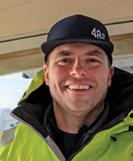
Prices vary for international or first class.
Proud members:
48º NORTH 6 MAY 2024
ACHIEVEMENTS OUTSIDE
LIMELIGHT 6
EXTRAORDINARY
THE
















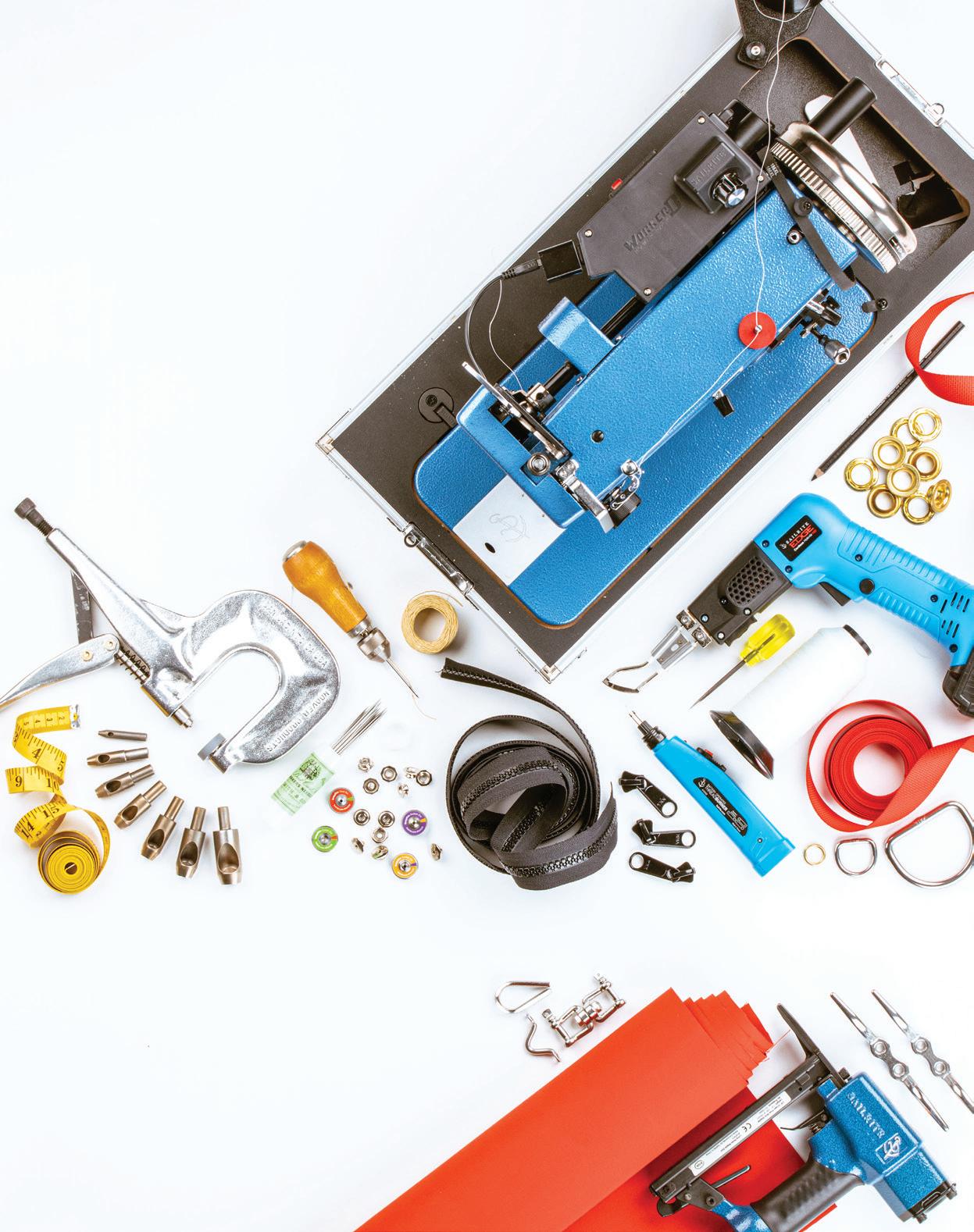



Items not available anywhere else. One-stop resource with deep inventory. Easy-to-reach technical sales staff. Extensive free how-to content. Competitive pricing. Quick shipping. FREE shipping over $199*. Everything you need. All in one place. ©2024 Sailrite Enterprises, Inc. *No promo code necessary. Free FedEx ® Ground shipping to the 48 contiguous United States only (excludes AK, HI and PR). Order subtotal must be $199 or more before tax and shipping to receive offer. Offer not valid on prior purchases. Does not apply to trade accounts. Some exclusions apply. Your fabric and sewing supply store | Visit us at Sailrite.com INDOOR/OUTDOOR VINYL INDOOR/OUTDOOR VINYL YOUR #1 DIY RESOURCE




YOUR PRE-OWNED ASPEN AUTHORITY
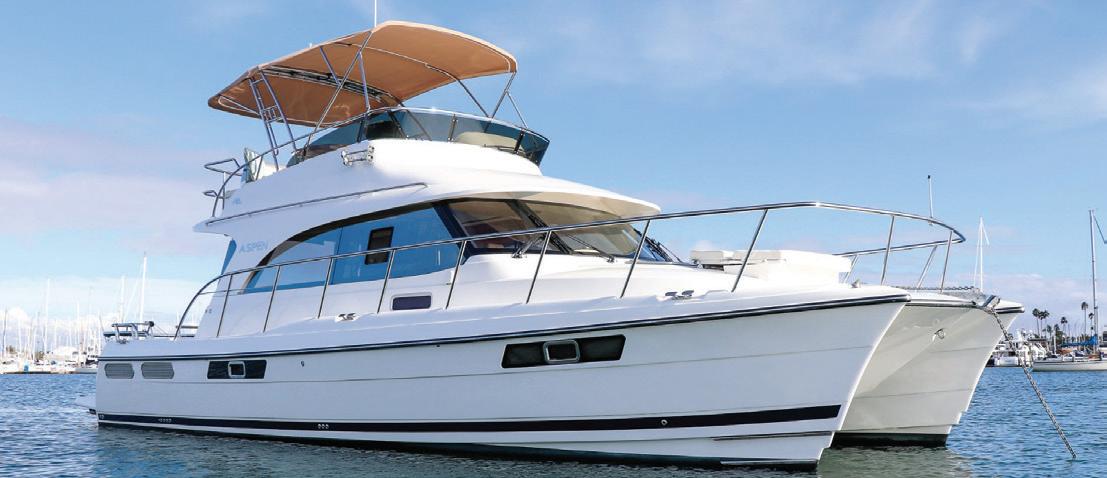




2022 Aspen C120



2022 Aspen C120 Anacortes, WA. Exquisite boat, just made the 1,200-mile trip north up the Paci c coast from San Diego to the San Juans. Set up for PNW cruising, custom ybridge layout, bow seat, center console Walker Bay. Electric heater along with Dual 15k BTU AC. BRNKL boat monitoring system. Just serviced (engine), and new bottom paint. Meticulously maintained by Aspen Service Department. Cruise 16kts at 11.5gph | Cruise 8kts at 2gph
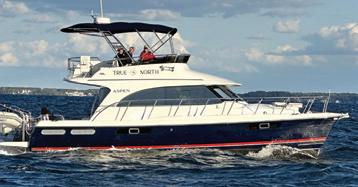




$1,049,000 Anacortes, WA. Exquisite boat, just made the 1,200-mile trip north up the Paci c coast from San Diego to the San Juans. Set up for PNW cruising, custom ybridge layout, bow seat, center console Walker Bay. Electric heater along with Dual 15k BTU AC. BRNKL boat monitoring system. Just serviced (engine), and new bottom paint. Meticulously maintained by Aspen Service Department. Cruise 16kts at 11.5gph | Cruise 8kts at 2gph


2021 Aspen C120
2021 Aspen C120 $1,079,000 Great Loop vet. Fully equipped. BRNKL
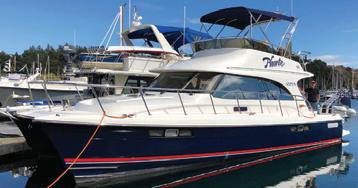
2021 Aspen C120 $1,079,000 Great Loop vet. Fully equipped. BRNKL
$1,079,000
Great Loop vet. Fully equipped. BRNKL boat monitoring system, and expedition fuel capacity for extended cruising. Deale, MD.

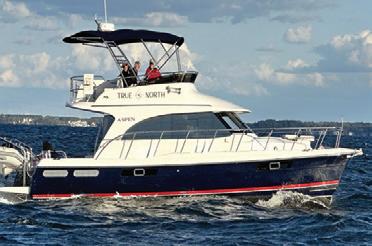


2020 Aspen C120
2020 Aspen C120 $849,000 Custom Flybridge Layout. Full Garmin electronics suite, salon AC and diesel heat with a 6 KW Gen Set.


2018 Aspen C100
2018 Aspen C100 $390,000 Rare expedition hardtop model. Volvo D3 220hp cruises at 18 kts burning 6 GPH. Excellent condition! Anacortes, WA.

2020 Aspen C120 $849,000 Custom Flybridge Layout. Full Garmin electronics suite, salon AC and diesel heat with
$849,000 Custom Flybridge Layout. Full Garmin electronics suite, salon AC and diesel heat with a 6 KW Gen Set. Tennessee River
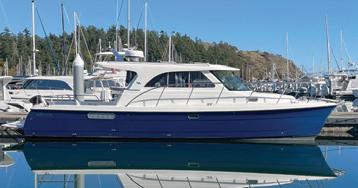
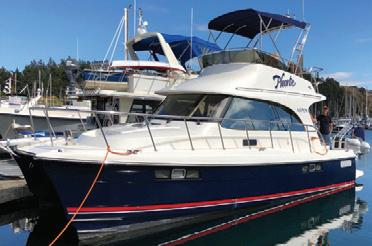
$390,000
Rare expedition hardtop model. Volvo D3 220hp cruises at 18 kts burning 6 GPH. Excellent condition! Anacortes, WA.
2018 Aspen C100 $390,000 Rare expedition hardtop model. Volvo D3 220hp cruises at 18 kts burning 6 GPH. Excellent condition! Anacortes, WA.
SOLD



2015 Aspen C100 $327,000 Freshwater boat! Upgraded folding bulkhead window, Wallas diesel heater, Ultraleather and Corian upgrades. Anacortes, WA.


$1,049,000


2018 Aspen C120
Aspen C120
$849,000 Low hours on Volvo-Penta D6. Expedition alternator and fuel tanks. 2x diesel heaters. Factory maintained! Anacortes, WA.
2018 Aspen C120 $849,000 Low hours on Volvo-Penta D6. Expedition alter-


2015 Aspen C100 $327,000 Freshwater boat! Upgraded folding bulkhead window, Wallas diesel heater, Ultraleather and Corian upgrades. Anacortes, WA.
2015 Aspen C100 $327,000 Freshwater boat! Upgraded folding bulkhead window, Wallas diesel heater, Ultraleather and Corian upgrades. Anacortes, WA.
Tennessee River


2016 Aspen C100 $320,000 Aluminum Float-On trailer. Highlights incude full
SOLD

2016 Aspen C100 $320,000
2018 Aspen C120 $849,000
Low hours on Volvo-Penta D6. Expedition alternator and fuel tanks. 2x diesel heaters. Factory maintained! Anacortes, WA.
2016 Aspen C100 $320,000 Aluminum Float-On trailer. Highlights incude full Garmin package, teak trim upgrade, and extended hardtop. Portland, ME.
Aluminum Float-On trailer. Highlights incude full Garmin package, teak trim upgrade, and extended hardtop. Portland, ME.
Phone: +1-360-668-4347 // nick@aspenpowercatamarans.com // aspenpowercatamarans.com/brokerage

website
today for more information on
YOUR PRE-OWNED ASPEN AUTHORITY
Visit our
or call
all of our pre-owned Aspens
ME.
Garmin package, teak trim upgrade, and extended hardtop. Portland,
Phone: +1-360-668-4347 // nick@aspenpowercatamarans.com // aspenpowercatamarans.com/brokerage Visit our website or call today for more information on all of our pre-owned Aspens YOUR PRE-OWNED ASPEN AUTHORITY
Aspen C120 $1,079,000 Great Loop vet. Fully equipped. BRNKL boat monitoring system, and expedition fuel capacity for extended cruising. Deale, MD. 2022 Aspen C120 Anacortes, WA. Exquisite boat, just made the 1,200-mile trip north up the Paci c coast from San Diego to the San Juans. Set up for PNW cruising, custom ybridge layout, bow seat, center console Walker Bay. Electric heater along with Dual 15k BTU AC. BRNKL boat monitoring system. Just serviced (engine), and new bottom paint. Meticulously maintained by Aspen Service Department. Cruise 16kts at 11.5gph | Cruise 8kts at 2gph 2020 Aspen C120 $849,000 Custom Flybridge Layout. Full Garmin electronics suite, salon AC and diesel heat with a 6 KW Gen Set.
2018
$849,000 Low hours on Volvo-Penta D6. Expedition alternator and fuel tanks. 2x diesel heaters. Factory maintained!
2021
Phone: +1-360-668-4347 // nick@aspenpowercatamarans.com // aspenpowercatamarans.com/brokerage Visit our website or call today for more information on all of our pre-owned Aspens SOLD YOUR PRE-OWNED ASPEN AUTHORITY SOLD SEE THIS BOAT AT
RACE! PARTY! PLAY!

June 24-28, 2024 l RaceWeekPNW.com
ORC, PHRF, One Design, Cruising Class
FUN!
SUNDAY JUNE 23
SkipperS Meeting & OPENING NIGHT PARTY
Featuring aaron CrawFord
MONDAY JUNE 24
raCing Followed by JIMMY BUFFETT NIGHT
Featuring dJ Mark JenkinS
TUESDAY JUNE 25
raCing Followed by REGGAE NIGHT
Featuring dJ Mark JenkinS
WEDNESDAY JUNE 26
raCing Followed by PRETTY IN PINK NIGHT
Featuring gertrude’S HearSe
THURSDAY JUNE 27
raCing Followed by ABBA NIGHT
Featuring tHe abbagrapHS
FRIDAY JUNE 28
raCing Followed by OVERALL AWARDS
Featuring SJatr
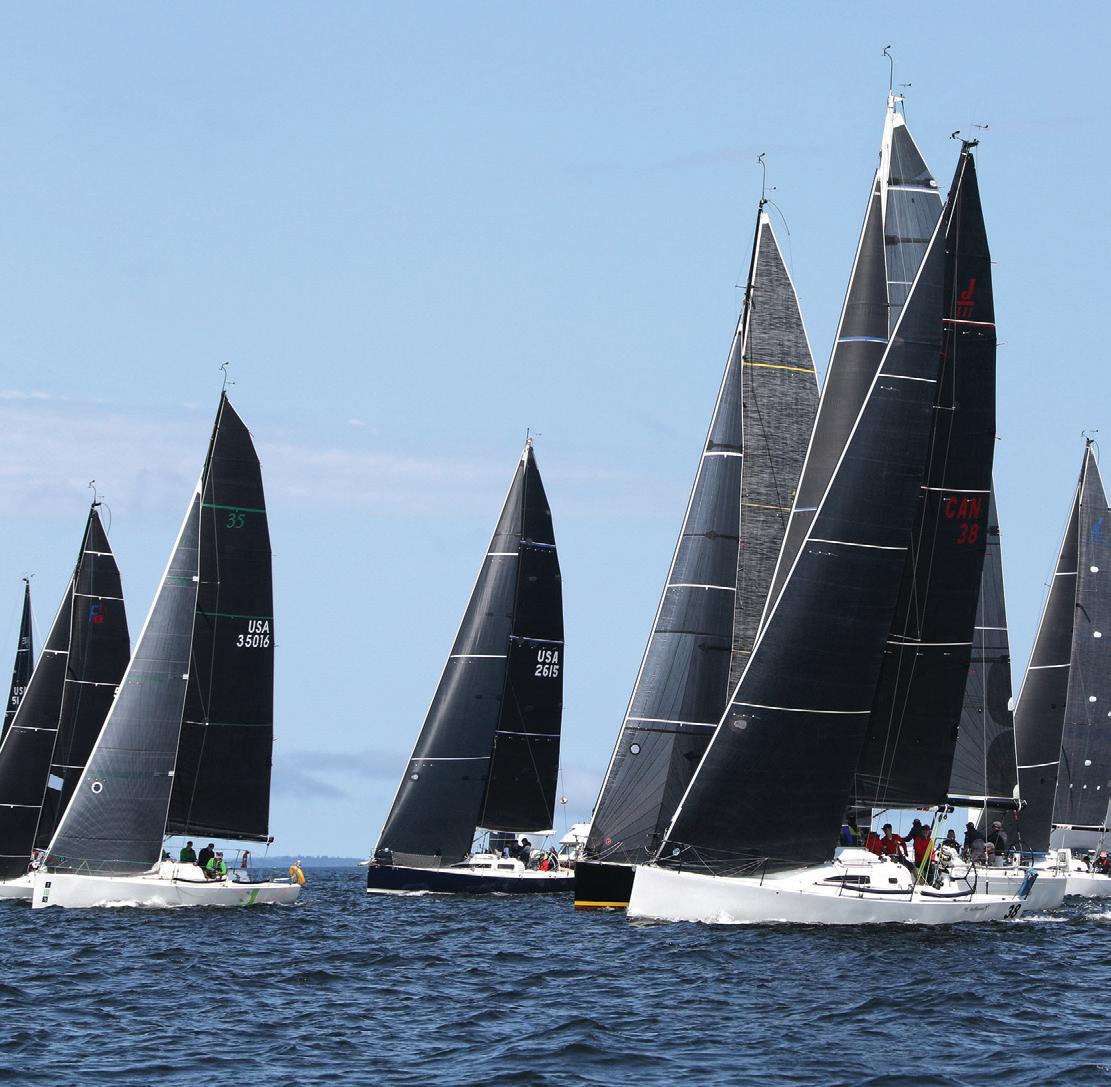
"Race Week in Anacortes exceeded our expectations in every way."
Spencer Kunath, Navigator TP52 Glory

REGISTRATION NOW OPEN!
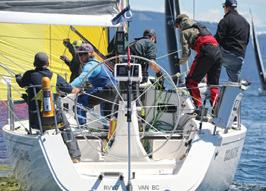
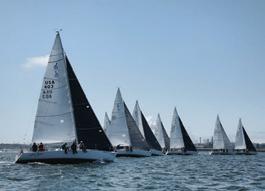
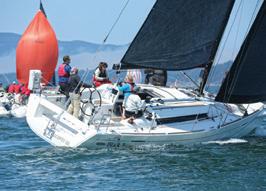













48º NORTH 9 MAY 2024
Photos by Jan Anderson

All the Power You Need
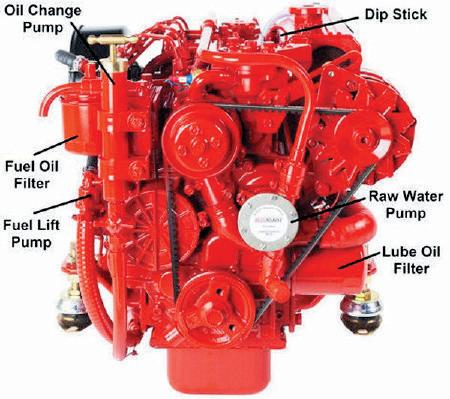
Engineered to be Serviced Easily!
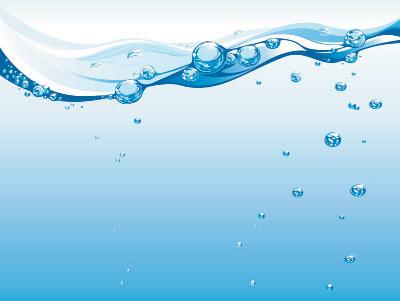
Beta Marine West (Distributor) 400 Harbor Dr, Sausalito, CA 94965 415-332-3507
Pacific Northwest Dealer Network
Emerald Marine Anacortes, WA • 360-293-4161
www.emeraldmarine.com
Oregon Marine Industries Portland, OR • 503-702-0123
info@betamarineoregon.com
Access Marine Seattle, WA • 206-819-2439
info@betamarineengines.com www.betamarineengines.com
Sea Marine
Port Townsend, WA • 360-385-4000
info@betamarinepnw.com www.betamarinepnw.com
Deer Harbor Boatworks
Deer Harbor, WA • 844-792-2382
customersupport@betamarinenw.com www.betamarinenw.com
Auxiliary Engine 6701 Seaview Ave NW, Seattle WA 98117 206-789-8496
auxiliaryeng@gmail.com
Washington Yacht Club Future Uncertain Hi Joe,
Would you please consider writing an article to help spread the awareness of how UW is essentially removing the sailing club against our will? Please refer to this: washingtonyachtclub.org/sailing-club-pushed-fromcampus/
This club has helped make so many of our local sailors around Puget Sound, I hope we can continue providing this service to our community.
Thanks for your time, Lia Boyd
Univeristy of Washington School of Medicine Student
Response to “PNW Hero Interview: Chris Wolfe” from March
Van Isle 360 Yacht Race: Absolutely Fabulous.
Pacific NW Offshore: Congratulations Chris Wolfe! Chris and Justin competed in the 2021 Offshore and took home 1st place in the doublehanded class and overall on SV Raku
David Odendahl: It’s been a privilege to lose races to her.
Response to “Sea Adventurer: An Interview with Kirsten Neuschäfer, Part One” from the April Issue
Marie Rogers: Brave, smart woman. Thank you, Kirsten Neuschäfer for being an offshore role model and inspiration to so many.
Linda Darlene Shaw: A good read.
Kaci Cronkhite: “I just liked the idea of it being a different boat to any of the boats that people previously thought of for the Golden Globe Race. It seemed like people were fixated on the Rustler 36, thinking that would be the only boat that could competitively sail in that race. I like doing things my own way (laughing).” She does! And, I do. Enjoyed this interview so much!! Great questions, Joe and Jeanne.
Robin Pat Conway: A story worth reading... especially if you considering racing, nonstop and singlehanded around the world, and oh yes, with no modern navigation equipment, in an old design second-hand boat! Hectic, is all I can say!
Martin Manning: Great interview with interesting details about managing the sails.
48º NORTH 10 MAY 2024 LETTERS 10
Beta
Model Shown
38

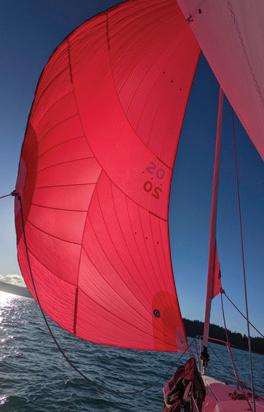
Sail Through Summer!
Join us on a San Juan Island Adventure aboard our Hanse and Beneteau sailboats based out of beautiful Fidalgo Bay, Anacortes, Washington.
Achieve your American Sailing 101,103 and 104 certifications with us in the heart of the season! We have open spaces in our Cruise N Learn courses June, July, August and September and also have room in our ASA 101-106 courses throughout the peak 2024 sailing season. We run ASA instructor clinics throughout the year.
Come up to Anacortes and stay for the weekend where sailing is the best!

719
sailtime.com/location/anacortes/sailing-school
Sign up online or call
48º NORTH 11 MAY 2024
28th Street, Anacortes, WA 98221
us directly to schedule: 360-245-1320



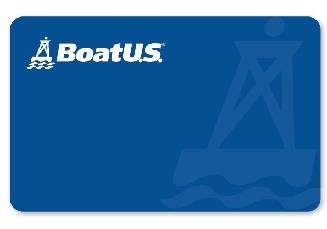
Boating is unpredictable but with a BoatU.S. Unlimited Towing Membership, it’s easy to keep your cool when something goes wrong. The last thing you want to worry about is “how are we getting home?” With TowBoatU.S. by your side, we’ve got your back and we’ll get you back. FOR WORRY-FREE BOATING Join Today! BoatUS.com/Towing Details of services provided can be found online at BoatUS.com/Agree. TowBoatU.S. is not a rescue service. In an emergency situation, you must contact the Coast Guard or a government agency immediately. & Keep Calm Boat On UNLIMITED TOWING MEMBERSHIP CARD
News from the Northwest Maritime Center >>
48° North has been published by the Northwest Maritime Center (NWMC) since 2018. We are continually amazed and inspired by the important work of our colleagues and organization, and dedicate this page to sharing more about these activities with you.
HUMAN-POWERED SEVENTY48 RACE SETS OFF FROM TACOMA ON MAY 31, HEAD TO THE START LINE TO CHEER ON THE LARGEST FIELD EVER
The SEVENTY48 race brings paddlers, rowers, SUPers, and pedal-boaters from Tacoma to Port Townsend each year, and continues to grow in size and influence. SEVENTY48 co-founder and former racer Dean Burke says, " When we started this thing back in 2018, none of us had a clue what would come of it. Our goal that first year was to get 30 teams. Since then, more than 800 teams comprised of more than 1,100 people have been a part of this race, growing every single year."
For 2024, SEVENTY48 will start in late May instead of early June, decoupling the schedule from its traditional position on the same weekend as the start of Race to Alaska. NWMC Race Boss Jesse Wiegel enthused, "2024 is the year that SEVENTY48 steps out from the murky shadow of Race to Alaska. It's the largest SEVENTY48 ever—currently, we have 130 registered teams." When asked how the schedule shift might affect the race, Race Boss rolled his eyes and declared, "There's a 6% chance it will be slightly colder." Mainly, it's about giving these adventure racers more dedicated and deserved attention.
The SEVENTY48 race start is in Tacoma, as always, but this year it moves down the waterfront to the Foss Seaport Waterway, which has a long linear dock and a large building to house registration and the start celebration on the evening of May 31, 2024. The boat- and adventure-curious public are welcome!
EVENTS CALENDAR » www.nwmaritime.org/events
WOODEN BOAT FESTIVAL TICKETS ON SALE!
May 6, 2024
Online
WOMEN'S BASIC KEELBOAT
FULL COURSE
May 27-31, 2024
Port Townsend, WA
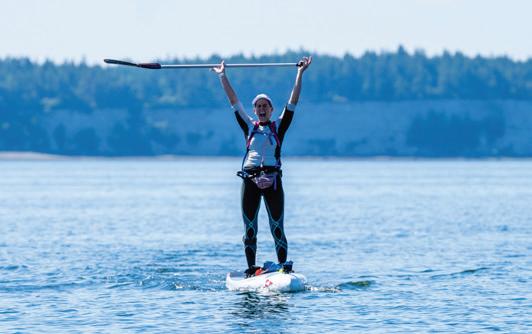
Burke brings it back to the humans whose power propels these vessels through the night (or two) and over 70 saltwater miles to the finish in Port Townsend, encouraging fans to visit the start and/or finish lines: "The racers who have shown up... their stories... the lives changed... it’s overwhelming. My only regret is that I don’t get to hear every single story. Walk up and talk to a racer, at the start or at the finish. Give a listen. You just might be inspired in ways you were not prepared for."
» www.SEVENTY48.com
R2AK PRE-START RUCKUS
June 8, 2024
Port Townsend, WA
NWMC CAMPUS EXPLODES WITH SUMMERTIME PROGRAM ACTIVITY,
Visitors to the NWMC campus in Port Townsend will surely notice the constant flurry of enthusiastic activity, with all generations— youth being most numerous, by far—busily learning about and exploring the maritime world and the Salish Sea. While many NWMC programs run year-round, the campus comes alive in May. On a given day, NWMC may host up to 100 students across some of the following programs:
The high school juniors and seniors in Port Townsend Maritime Academy will be learning how to sail and navigate on NWMC's keelboats.
You may find a group of middle school girls in the Boatshop using power tools as they learn woodworking and boat building techniques in the Girls Boat Project program.
Members of BRAVO Team—an alternative learning experience program centering around longboats that's part of Port Townsend Schools—will be out on a longboat learning seamanship, teambuilding, and connecting to the environment; culminating with an overnight voyage this month.
ON AND OFF THE WATER
YE OLDE SHIPWRIGHTS TOOLS
June 29, 2024
NWMC Boatshop
A huge influx of middle school students participate in the Maritime Discovery Program. Coming from schools as far away as Bellevue, they spend multiple days on campus learning about maritime careers, building boats in the Boatshop, trying their hand at navigating in the Pilothouse Simulator, investigating plankton and water quality, and getting a chance to be out on the water, either in a longboat or sailboat.
In the afternoons, the bay will be full of Port Townsend High School sailors practicing for their next regatta.
In June, seven weeks of NWMC youth summer camps begin, with kids aged 5-17 experiencing maritime life in many ways, from dinghy sailing and using rowboats to investigating marine life.
Groups of adults are around taking frequent basic keelboat classes, maritime skills classes, of getting hands-on in Boatshop classes
It's a busy time of year, and great to see the NWMC campus so bustling and vibrant!
» www.nwmaritime.org/programs
48º NORTH 13 MAY 2024
Photo by Dean Burke.
low tides » News & Events
ANACORTES BOAT & YACHT SHOW FEATURING TRAWLERFEST COMING MAY 16-18
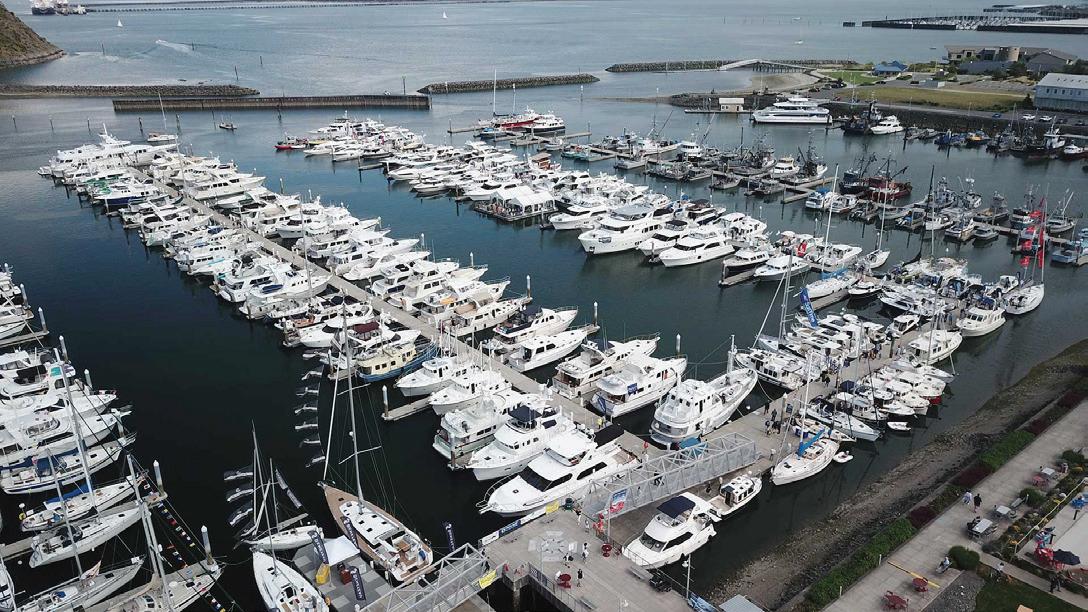
A great option for fun, learning, and exploring different types of boats, the Anacortes Boat & Yacht Show featuring Trawlerfest is right around the corner. The Northwest Marine Trade Association (NMTA) and Anacortes Chamber of Commerce are once again teaming up with Trawlerfest for the 2024 Anacortes Boat & Yacht Show featuring Trawlerfest, May 1618, 2024 in Anacortes, Washington.
The event will feature in-water and on-land displays with hundreds of boats at Cap Sante Marina and neighboring
boatyards, plus the return of Trawlerfest’s highly regarded 25+ seminars and educational classes that will take place May 14 – 18 at the nearby walkable location of Seafarers’ Memorial Park.
The show will also feature shoreside displays including trailerable boats, marine accessories, electronics, destinations, and service providers.
» www.anacortesboatandyachtshow.com
SCHOONER ZODIAC CELEBRATING 100TH BIRTHDAY WITH OPEN HOUSE
Well known around the Pacific Northwest, the 160-foot Schooner Zodiac will celebrate its 100 th birthday at an Open House on Sunday, May 19, at the Bellingham Cruise Terminal in Fairhaven from 11 a.m - 4 p.m. The ship operates from March to October with varied trips from student groups to themed trips into the San Juan Islands to 3-hour sails on Bellingham Bay. Celebrating a 100 th birthday is a remarkable feat for a wooden vessel, and some special events have been
planned to commemorate the big day. There will be displays highlighting Zodiac’s history, and the ship itself will be open for deck tours.
The Schooner Zodiac will also be partnering with local groups to help celebrate, with opportunities including book signings, an interview with Captains Tim and Calen Mehrer on key moments from the Zodiac’s decadeslong restoration, a kids corner with maritime-themed activities, and more.
» schoonerzodiac.com
NORTHU DOWNWIND SAIL TRIM SEMINAR IN TACOMA
If you are looking to improve your downwind sail trim and sail faster, NorthU’s seminar on Thursday, May 16, at the Tacoma Yacht Club is for you and your crew. The in-person seminar involves classroom-based instruction with interactive presentations taught by experienced NorthU sailing coaches and is $30 per person. Check-in starts at 6 p.m., and the seminar runs from 6:30 to 9:30 p.m.
» www.regattanetwork.com/event/27650
48º NORTH 14 MAY 2024
SALISH 200 NOW FORMALLY A PACIFIC NORTHWEST RACING EVENT FOR 2024
The Salish 200 started as a seat-of-your-pants, “officially unofficial” adventure race, and organizers Jason Andrews and Shawn Dougherty are now excited to partner with the Corinthian Yacht Club of Seattle (CYC Seattle) for the 2024 edition to evolve this epic event into a formal Pacific Northwest classic that showcases the beauty of the Salish Sea.
The race is scheduled for June 21-23, 2024, with fleets starting at 7 p.m. on Friday in Port Townsend and going either north around San Juan County or south around Vashon Island as they make their figure eight for the 200-mile race. The fleets will finish in Port Townsend by a 7 p.m. time limit on Sunday. Registration for the Salish 200 race will open May 1, and is open to monohull and multihull boats with an ORC or PHRF rating. To accommodate as many vessels as possible, this year’s Salish 200 will feature three course options: Salish 100, Puget Sound 100, and the Salish 200.
» For more information visit Salish200.com and 48north.com.

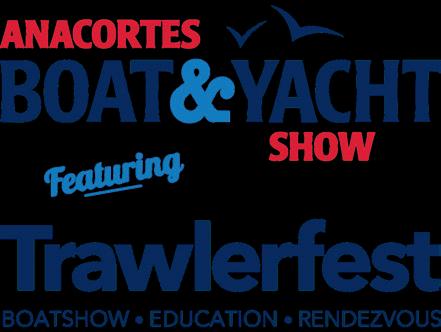
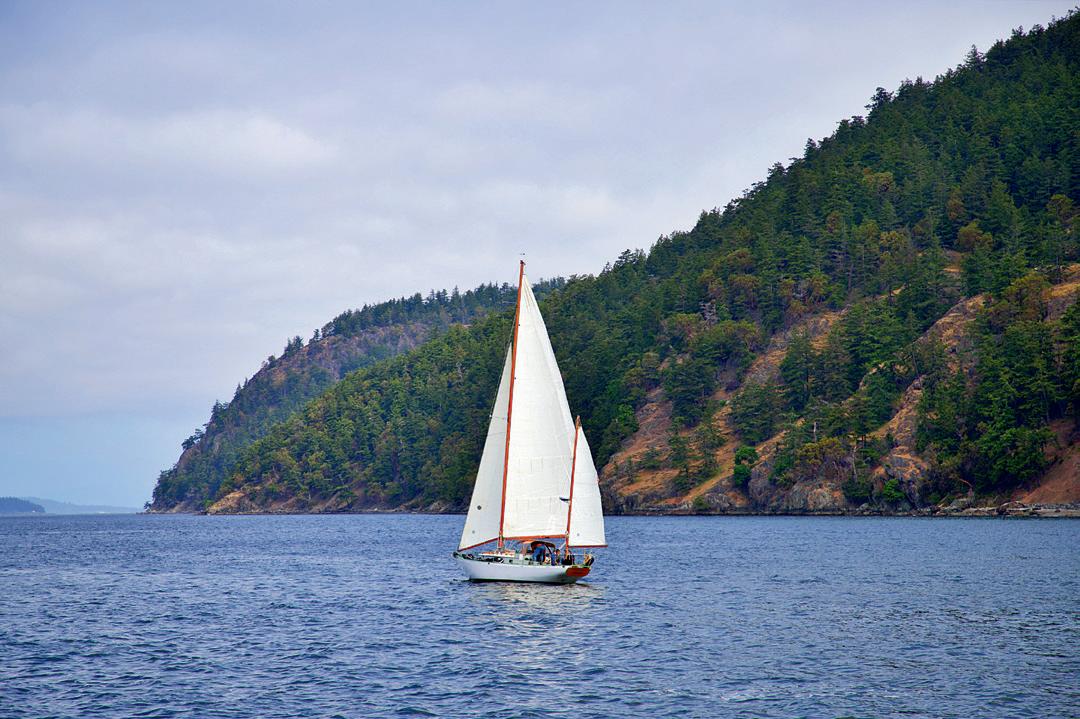

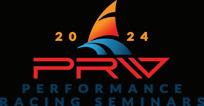



48º NORTH 15 MAY 2024
tides » News & Events GET TICKETS NOW WWW.ANACORTESBOATANDYACHTSHOW.COM Adventures Begin Here BOAT SHOW: MAY 16 - 18 SEMINARS: MAY 14 - 18 CAP SANTE MARINA ANACORTES, WA Discover new and brokerage boats from the top brands, dealers, and brokers, alongside accessories and services, all in one stunning location. Immerse yourself in expert boating seminars and evening rendezvous activities. It's the ultimate spring boating destination! Get your tickets today.
low
check-in opens at 6:00PM
CROSSWORD AND TRIVIA
DID YOU KNOW?
by Bryan Henry
Marine comes from the Latin marinus, sailor, from the Latin mare, sea, which also gives us mariner, maritime and marinate (to pickle in saltwater).
The word fleet, as in a fleet of warships, comes from Old English fleotan, to float or drift. The related Old English fleot means a group of ships.
Technically, an estuary is that part of a river where its current meets the sea and becomes influenced by the tides. It comes from the Latin aestuarium, tidal channel, from aestus, tide.
Archipelago refers to any large body of water studded with islands, but originally it meant “chief sea”, specifically the Greek Aegean Sea.
The word peninsula has two Latin roots: paene, meaning “almost”, and insula, meaning “island”. So a peninsula is “almost an island.”
Canal and channel come from Latin canalis, groove, pipe, channel.
ACROSS
1 Order to prepare for tacking, 2 words
7 Abbreviation for able seaman 9 Hearing organ
in front, 2 words
the shrouds permanently rigged from
DOWN
1 System that is used to establish bearing and distance to target
2 Toward the stern 3 Nay’s opposite
Sound of relaxation
Temporary rank awarded in the navy and other military forces
from
attachment that acts as a kind of sensor for taste
right angles to the ship’s deck
» See solution on page 50
Brackish comes from the Dutch brak, meaning salty.
A waft, meaning to float or drift, as in “the aroma of coffee wafting through the air,” comes from the word wafter, an escort ship that convoyed other ships safely to port.
The word govern come from the Latin gubernare, to steer a ship. A maxim dating back to ancient Greece holds that those who govern “steer the ship of state.”
The word harbor is closely related to Old French herberge, shelter, and is based on the Old English herebeorg, “refuge for an army”.
The word inundate, as in floodwaters inundated the city, comes from the Latin in- (on) plus unda (wave), so the word means literally “to cover by a wave.”
An armada, meaning a fleet, flotilla, navy, is a Spanish word meaning “armed force”, as in the “Invincible Armada”, the ill-fated fleet of 130 ships sent against England in 1588 by Philip II of Spain.
Technically, a boat is a small, open craft that can be hauled out of water. A ship is a larger craft that can’t be hauled out of water, but requires a drydock.
48º NORTH 16 MAY 2024
16
11 Directly
12 Rowing equipment 13 Away from home 14 Rungs
bulwarks 17 Bar check 20 Ascends to
perhaps 22 Fishy
24 Tug’s
25 At
26 ____ Locks,
27 Lungful 28 Creeping vine 29 Cabin that protrudes
deck 32 Concord’s state, abbr. 33 Hoisted 34 Tiny fish, eaten by whales
between
the crows nest,
action
Sault Ste Marie
above a ship’s
4
5
6
8 Sand____ 10 Jacuzzi, 2 word 15 “___ hands on deck” 16 Type of motor 18 Puffed up, like sails in the wind 19 Tranquil 20 Bottom feeding fish 21 Close to, 3 words 23 Two-masted vessel 26 Racing boat 30 Wrong __ of the stick 31 Lady pronoun 12 345 67 8 910 11 12 13 14 15 16 17 18 19 20 21 22 23 24 25 26 27 28 29 30 31 32 33 34
Release

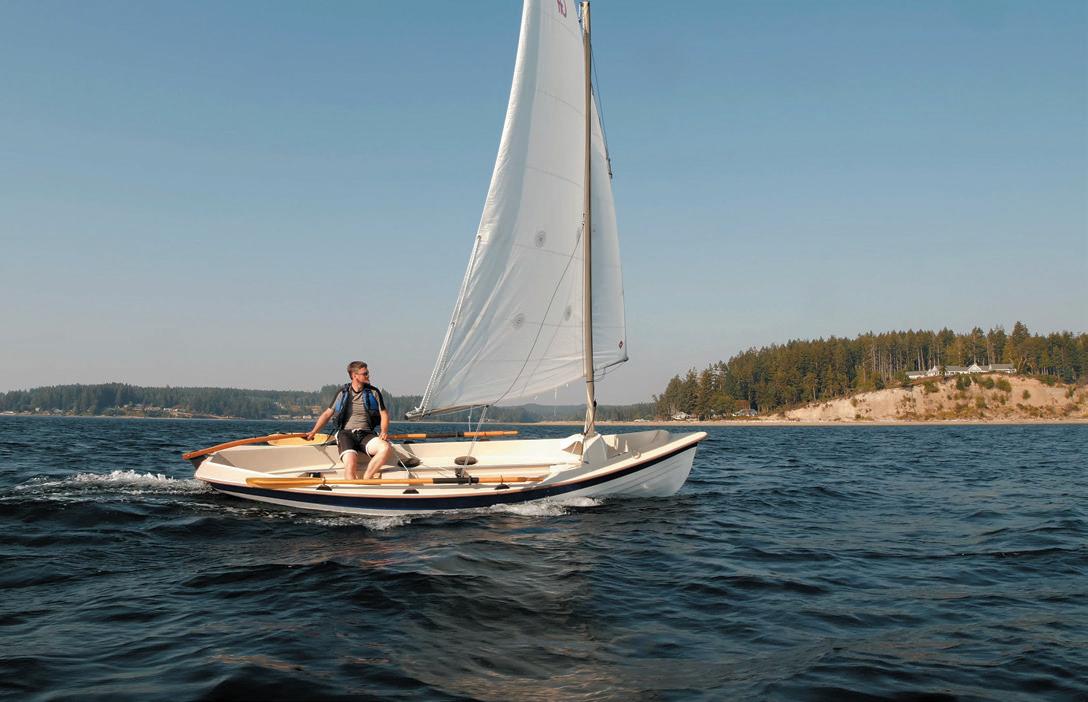








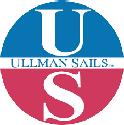

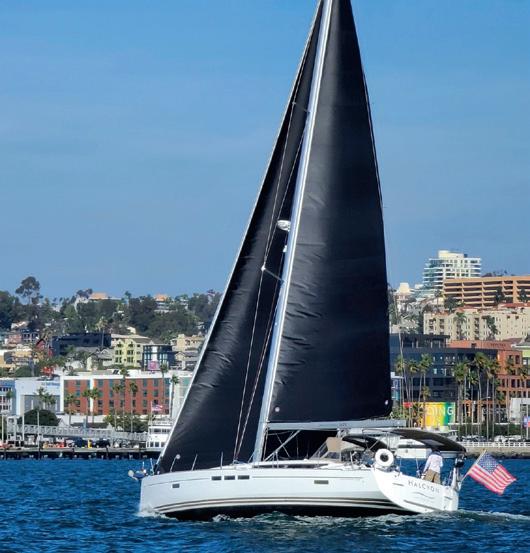

48º NORTH 17 MAY 2024 Ullman Sails • (360) 504-6640 9090 S March Point Road, Building C-200, Anacortes, WA 98221 Pnw.ullmansails.com ULLMAN SAILS Pacific Northwest Free Service pick up and delivery in Puget Sound area. Call us for information. SponSor of AnAcorteS rAce Week Gig harbor, WA USA 253-851-2126 ghboats.com Since 1987, we’ve built traditional style Sailboats, Rowboats and Yacht Tenders right here in the Pacific Northwest. 17’ Salish Voyager Sailboat scan here to learn more Traditional Designs. Modern Sensibilities. www.sandiegomarine.com We are a great family of marine stores with knowledge and resources to meet all of your boating needs. Is Your Boat Ready for Summer? WE CAN HELP! sales@sailingsupply.com (800) 336-SDMX • Mexico 001-800-336-7369 (800) 532-3831 2804 Cañon St., San Diego, CA Cordage Crew Gear & Apparel Deck & Hull Hardware Electrical Epoxies Adhesives & Repair Galley, Stoves & Barbeques Plumbing & Sanitation Sailboat Hardware & Rigging
low tides » Products News
» RAYMARINE ALPHA PERFORMANCE DISPLAY
Having sailing data available at our fingertips has come a long way in the past couple decades, and Raymarine has been at the forefront. Their new Alpha series touchscreen displays prove this. The units are high-visibility with fully customizable marine instrument data and graphic displays to help you make smarter sailing decisions. Designed for helm or mast mounting, the Alpha series is customized and controlled via its touchscreen and remotely from a networked Axiom Chartplotter. Customizable modes are available for sailing, navigation, and engine instruments. SailPoint™ mode provides you with a visual reference of target wind angle, helping you achieve your maximum VMG upwind or downwind. The screens are polarized sunglassesfriendly from extra wide viewing angles, viewable on the mast or remote location. The displays can be mounted in landscape or portrait, and 7-inch and 9-inch versions are available.
Price: $1,199.99 - $1,999.00 » www.raymarine.com
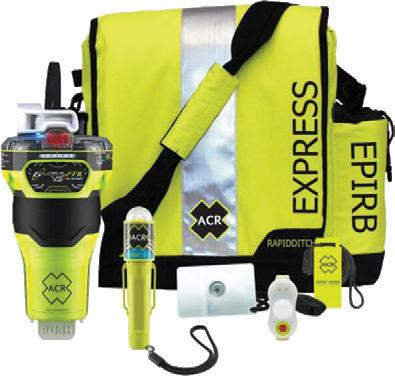

» ACR GLOBALFIX SURVIVAL KIT
Boating safety manufacturer, ACR, recently released their new GlobalFix V5 AIS RLS EPIRB Survival Kit, an all-encompassing and dependable set of vital resources, ensuring your security and giving you the best chance for survival in waterborne emergencies. Tailored for seasoned sailors and racers, avid anglers, and cruisers alike, this kit stands as an indispensable addition to your onboard gear. The kit includes the following essential survival products: GlobalFIX V5 Cat. 2 EPIRB, RapidDitch Express Bag, HemiLight™3 for lifejackets, C-Strobe H2O SOLAS Strobe Light, Signal Mirror, and a WW-3 Res-Q™ Whistle. The Ditchbag is designed to float up to 15 lbs of equipment. The EPIRB features a 72 Channel Multiconstellation receiver, 48 hour minimum battery life, AIS Alerts for Local Rescue Return - Link Service RLS confirmation direct to beacon, Near Field Communication and mobile app. Price: $879 » www.acrartex.com
» MAGMA NON-STICK GRIDDLE
There’s something special about getting to an anchorage or back to your slip and firing up the grill for good eats with family and friends. Now you can elevate these cooking experiences with Magma’s versatile Reversible Non-Stick Griddle, designed to seamlessly integrate with your Magma grill. This innovative griddle features a smooth surface on one side and ridges on the other, catering to a wide range of culinary creations. The griddle’s cast aluminum construction with non-stick coating ensures even heat distribution, resulting in perfectly cooked meals every time. Whether you’re whipping up fluffy pancakes, sizzling bacon, or crafting restaurant-quality fajitas, this griddle delivers exceptional performance. The griddle sizes are compatible with Magma’s Cabo Grill, ChefsMate Grill, and Newport Grill, and come with a removable stainless steel handle with stay-cool rubber grip.

Price: $59.99 » www.magmaproducts.com
48º NORTH 18 MAY 2024

Boatbuilding & woodworking classes for all skill levels at the Northwest Maritime Center.


INSTALL Business or Pleasure, AquaDrive will make your boat smoother, quieter and vibration free.
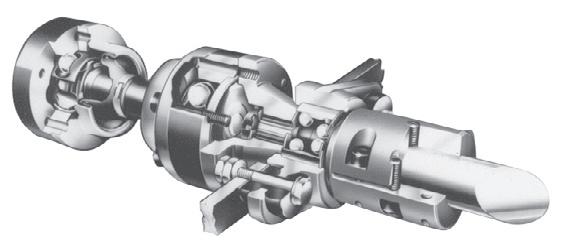
The AquaDrive system solves a problem nearly a century old; the fact that marine engines are installed on soft engine mounts and attached almost rigidly to the propeller shaft.
The very logic of AquaDrive is inescapable. An engine that is vibrating
on soft mounts needs total freedom of movement from its propshaft if noise and vibration are not to be transmitted to the hull. The AquaDrive provides just this freedom of movement. Tests proved that the AquaDrive with its softer engine mountings can reduce vibration by 95% and structure borne noise by 50% or more. For information, call Drivelines NW today.

Learn more at nwmaritime.org 431 Water Street, Port Townsend, WA 360.385.3628 | info@nwmaritime.org
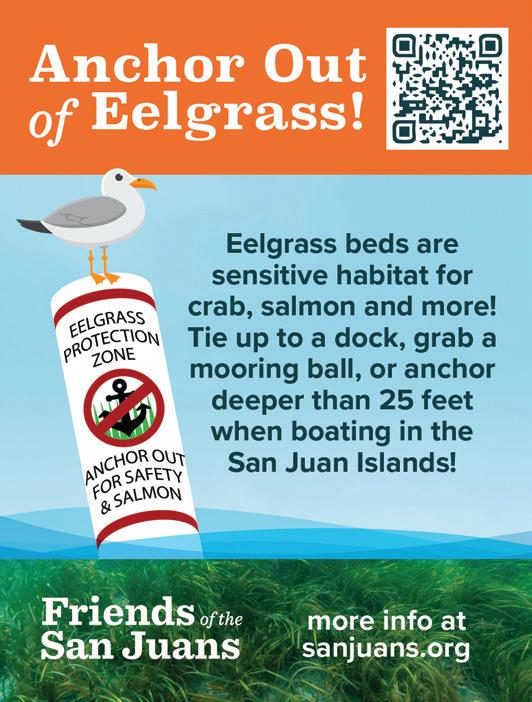
Seattle, WA 98108 • (206) 622-8760 Visit Our Web Site: www.aquadrive.net

48º NORTH 19 MAY 2024 Cape George Marine Works Inc. 1924 Cape George Rd. Port Townsend, WA 98368 360.385.3412 Cape George 34 www.capegeorgecutters.com
311 S. Brandon St,
Ships FREE Ground UPS! “A‑Northwest Legend for Over 25 Years” CREATE. CRAFT. LEARN.
5hp – 2000hp
CLOSE TO THE WATER 20 LOOPING THE ISLAND
 by Bruce Bateau
by Bruce Bateau
At 20 miles around, Harstine Island could be circumnavigated with a powerboat in an hour. But freeway speeds yield freeway views: a blur of trees, missed inlets, and a flash of homes. A slower speed suits me better, one that lets me savor the scene.
I circle the island by sail and oar, turning those miles into days. I never tire of the circumnavigation, and when friends come along, the journey includes conversation, camaraderie, and different perspectives; seen through other eyes, the island is new to me again. So it was one sunny spring weekend when Dan, Galen, and I met in a gravel parking lot adjacent to a rural launch ramp where commercial shellfish crews came and went in their trucks and aluminum work boats.
Dan and I have sailed together many times over the years. He’s always faster at rigging and sailing than I am and I admire the elegance of his neat cockpit, satiny brightwork, and his

systems, all down pat. Row Bird and I may not be so orderly, but Dan and I both want the same things from a cruise: not too many miles traveled, an early stop, and the opportunity to pull out our sketchbooks well before the sun sets.
I kept an eye on Galen, a new friend, as we packed our boats. He stowed a backpack into his aft locker, followed by a lump that looked like a drysuit, and then distributed bags of food and a teapot into a surprising number of well-organized smaller lockers. I was looking forward to getting to know him and was impressed by his preparedness.
A trickle of sweat rolled down my brow as I rowed away from the ramp. Everyone else was already in the water, stoked, but also surprised, by an 80-degree day in mid-May. The wind teased us with an occasional zephyr, although nobody was in a hurry; sails went up and down, oars were shipped and deployed. Conversations drifted across the water. We craned our necks to take in the old-growth trees towering over the water at Hope Island State Park and I noted changes to the shoreline since my last visit. Soon, a building ebb tide started to push us north for the first leg of our clockwise trip around the island.
Drifting past the rich tapestry of greens on the south end, Galen and I chatted about life and boats. He’d lived in the Pacific Northwest for most of his life, but this stretch of water was new territory for him. As we approached the Harstine Island Bridge, the pillars seemed to draw near at alarming speed; the current had clearly supplemented our casual rowing pace. Past a bend, the sound of cascading water beckoned us into a small cove. To our disappointment, it was only the outflow from a large culvert. But a few ducks in a pocket wetland gave us something
48º NORTH 20 MAY 2024
When circumnavigating Harstine Island, there are several great spots to stop in for the night.
to watch and as we probed into its 200-foot width, we mentally bookmarked the peaceful spot as a future overnighting berth for our tiny boats.
Continuing on, we rounded the second quarter of the island where ripples began to show in Pickering Passage. All sails were set as we traded tacks northward. Reclining on my floorboards, I kicked my feet up on a bench and savored the sight of the blue sky. The wind, and the sound of water lapping over wood, was so soothing that all conversation ceased. We stopped poking into divots on the shoreline and just sailed.
The wind gave out at the north end of the island, adjacent to the mouth of Jarrel Cove, where we slipped into the shallows just east of the state park dock and decided to spend the night. Surrounded by woods on three sides, the water was so calm that when I awoke around 2:00 a.m., I had to rock the boat to convince myself that I was still afloat.
Come morning, we packed and silently rowed away in the predawn hush. Then the sun rose over the treetops, illuminating the water of Pickering Passage, which now looked like liquid jade, each bead of water from our oars lingering on its surface.
Two miles later, we reached the broad, mirror-like expanse of Case Inlet. There was no hint of the north wind we’d hoped for, which would allow us to continue our circumnavigation with minimal effort. But with no particular place to be, we were happy to take our time getting there, wherever “there” was.
After eating snacks, spinning yarns, and laying about as the day warmed, we lazily rowed a few miles south to McMicken Island State Park, where we felt we’d arrived in the tropics. Motorboats backed onto the beach. Sunbathers relaxed on lawn chairs, and shorts-wearing mariners in dinghies came and went from larger craft. A few brave souls even swam.
From the air, McMicken looks like a squid, with a long tentacle that reaches towards Harstine. As the tide drops, that tentacle, actually a sandbar, connects the islands. We joined the crowd, lounging in a shady spot on the shore, content to be out of the sun and in good company.
By lunchtime, just as we had become convinced that it was too hot to travel farther, boats in the anchorage started to shift on their moorings. “It’s just a land breeze,” Galen said; but after fifteen minutes, when it showed no signs of abating, we gathered our gear for departure. Before we got too far down the beach, a group of picnicking ladies stopped us.
“Are those your boats over there? And where are you headed?”
“Yes, that’s mine,” Dan replied, pointing to Otter. “We go

where the breeze and currents let us… and we can sleep aboard, so the possibilities are many.”
Seemingly fascinated, the women peppered us with questions. It was fun to talk and flirt, but I worried that if we didn’t leave soon, the emerging sandbar would block our path, and we’d have to fight a headwind.
The picnickers seemed sad to see us depart. “Before you go, you should take some cheese,” one insisted, digging into her cooler and handing me a sizable, truffle-infused wedge.
Our provisions elevated by this generous gourmet gift, we launched our boats and then rowed with all our might in a few inches of water, attempting to generate enough momentum to slide over the bar. Although our shallow keels touched bottom a few times, we were soon underway, centerboards down, sails up and continuing south in a building breeze.
Two hours later, we’d crossed the turbulent waters of Dana Passage and rounded up in the shelter behind a small bluff in a deserted Henderson Inlet. Ignoring the houses dominating the horizon, we rafted up. Out came smoked salmon, crackers, cider, and of course, our truffle cheese.
Good food coupled with good company led to a jubilant mood. Tomorrow, we’d succeed in sailing or rowing the last few miles to complete the loop. But today we reflected on our luck in possessing these versatile boats: good for pulling ashore on the beach, big enough to sleep on, and unusual enough that people wanted to learn about them—and sometimes gift us fancy cheese.
Bruce Bateau sails and rows traditional boats with a modern twist in Portland, Oregon. His stories and adventures can be found at www.terrapintales.wordpress.com

48º NORTH 21 MAY 2024
The beach at McMicken Island State Park is perfect for a break in the shade.
South Puget Sound is an ideal destination for small boat cruisers.
THREE SHEETS NORTHWEST 22

THE DRAWERS OF PERCEPTION
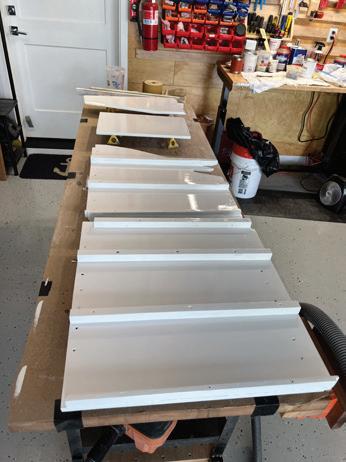
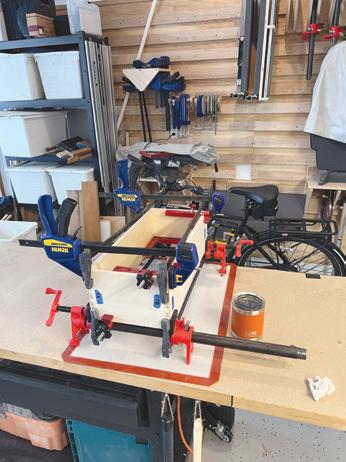
The first coats of varnish on the teak drawer fronts are drying downstairs. It has been a long and challenging journey just to get to this point. But the time and effort have proved rewarding in many unexpected ways.
This particular boat project was conceived more than a decade ago when we first started cruising on our 1984 Passport 40 sailboat, Rounder. It was early days and the full extent of the many refit projects that would eventually come to pass hadn’t even dawned on us.
But one thing was clear—we needed some more drawers.
Our boat was built in Taiwan, during a time when quality teak was generally available. To say the interior of our boat is rich in this wonderfully expressive and warm tropical wood is an understatement. Doors are made from solid teak. Same with our dining and navigator’s tables. The bulkheads and cabin soles are covered in ¼-inch thick “veneers” of teak.
Not only did the builder use wonderful wood, but the quality of the joinery is amazing. We often marvel at the beautifully curved tops of the cabinet doors and the profile of the large galley fiddles. The drawers are built with both full- and half-blind dovetails and constructed in a fashion that allows the relatively thin bottom of the drawer to be replaced if it ever breaks.
There is a level of craftsmanship throughout the boat that is simply stunning. No one builds boats like this
by Marty McOmber
anymore.
But times change and our boat isn’t a museum piece, so we aren’t afraid to drill holes or install new equipment when it makes sense to do so. I just prefer to do those things in places that aren’t easily visible.
Any visible modification to our interior has to be done thoughtfully and with great care. Most of the modification that we have done inside the boat has been to areas where previous owners had already made changes, such as the ill-conceived placement of an early chartplotter at the nav station.
We already have a number of very lovely and functional drawers on the boat—in the galley, nav station and the aft cabin. Where we didn’t have any, however, was in the main stateroom, where we keep most of our everyday clothes and sundry items.
I know that drawers are considered an inefficient means of storage on a boat; lockers and shelves are much better for volume. But drawers are incredibly convenient for certain items. And when it comes to T-shirts, socks and other daily clothing, they make a lot of sense.
So each year, as I assembled the list of projects to get done on the boat, I added “build a set of drawers in the stateroom.” And each year, I never got around to building them.
This is not to say that I didn’t think about them. In odd moments, I would look around the cabin—which consists of a large V-berth, a decent-sized hanging
48º NORTH 22 MAY 2024
One of three dovetail drawer boxes glued up.
Building the interior framework for the drawers, painted and ready to install.
locker, and a small square of sole—and try to figure out where drawers might go. There weren’t really a lot of good options. In fact, there was only one—the small bulkhead under the starboard side of the V-berth.
The bulkhead formed a useful, but not convenient, storage locker under a part of the berth. One day last summer, I got out the tape measure and a sketchbook and decided it was finally time to see if the dreams of drawers had a chance to become a reality.
I must have come up with a half-dozen different design sketches—and a good thing, too, since each one helped me find a fatal flaw in my thinking. Hey, I can fit four drawers about 12 inches wide right here. Oh, wait, the shape of the hull cuts right into where the bottom drawer would be. And dammit, there is a structural cleat along one side of the bulkhead that I shouldn’t cut into.
On and on it went. Finally, I had a good three-drawer design, each about 10 inches wide and between 17 and 20 inches long. They would be just large enough to be useful. But it would require some creative woodworking to build the bottom drawer, since a standard rectangular box shape wouldn’t fit along the hull.
With the approach and design now mostly worked out, I needed to confront another challenge. How in the world am I going to actually build these?
I’d only recently begun to explore woodworking as a hobby. I had taken shop classes in high school and played around with rough construction through the years. More recently, I began building out a collection of decent woodworking tools and learning new techniques, mostly for projects around the house.
But fine joinery would be a stretch. And that is exactly what I would need to do in this case.
I read Don Casey’s “This Old Boat” and Fred P. Bingham’s “Practical Yacht Joinery,” among other works. And I scoured the internet. But there was no easy step-by-step guide to retrofitting a set of drawers into the boat. So I closely examined how the other drawers were built on our boat.
I discovered a number of clever ways that the original builders used to make functioning drawers that stayed in place
without any additional hardware. The details turned the simple drawer into a work of art to me.
I have heard stories about the boatyard where our boat was built, how entire families would work together on certain portions of the boat. So much of it was hand-built in conditions that would be considered primitive compared with the kinds of facilities where boats are typically constructed today. But the quality of the work didn’t suffer. In fact, it is demonstrably better than anything you would find in a new boat today.
Eventually, I felt like I was ready to dive into the project, at least half-confident that I would be able to puzzle my way through each step. And the first step was literally the one that seemed the hardest—I had to cut out the face of this perfectly nice teak bulkhead.
I built a jig so I could use my plungecutter for the task and … it worked! The cutout was square, in the right place and to the right dimensions.
Next, I built the teak frame for the drawers, milling the wood from rough lumber and seeking to mirror the same approach that the original builders used in the boat. That seemingly simple step took me several weeks of evenings to complete and install. But in the end, it looked perfect.
Then I had to template out and build the framework that would support the drawers inside the storage locker. It was critical to make the walls of the framework parallel to each other, and perpendicular to the frame. This too took several more weeks of puzzling and futzing to get just right.
Finally, I started on the drawer boxes and faces themselves. Because I was determined to build these to the same standards as the boat’s original drawers, I needed to learn how to cut dovetail joints and other semi-advanced woodworking techniques. More teak was milled from lumber and turned into exact matches of the other drawer fronts onboard.
I dry-fitted everything, and to my amazement, it worked.
Now there is just the final gluing and finish work left to do. That first coat of varnish is just about dry now, but I’m guessing it will be another week or two before this project is finally finished.
Although I set out to build a simple set of drawers, like many other projects, this one has opened new doors to my enjoyment and understanding of the boat on which we sail. I have gained a number of new skills, learned another important lesson in patience and focus. But most importantly, I have deepened my respect for the craftspeople who, 40 years ago, built this boat with such skill and craftsmanship.
Marty McOmber is a Pacific Northwest sailor, writer, and strategic communications professional. He is currently working on refitting and improving his 1984 Passport 40, Rounder, for continued cruising adventures near and far.

The teak drawer fronts prepped for a final coat of varnish.
New drawers installed and ready for many years of use.
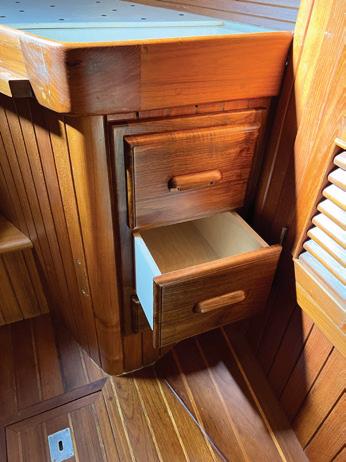
48º NORTH 23 MAY 2024
SHIFTING GEARS 24

HOW DID WE GET HERE?
by Dennis Bottemiller
Last summer I was helping my friends Chuck and Charlotte with some garden pruning and when we went in for lunch, I saw an old framed black and white photo of them standing in their Slickcraft 23 open boat in front of a glacier, so I had to ask. They both lit up and told me stories about their two trips to Alaska from Tacoma in that boat in 1977 and 1979, a month each time and how our boat Sea Lab would be such a great vessel to do that same trip. Chuck and Charlotte had begun their water career in that Slickcraft and subsequently had a long cruising career in their 35-foot Hallberg-Rassy named Queen Charlotte
Of course, this got Tekla and I thinking… is that possible for us to do?
We have thought about trailering into Canada to see how far we could get but why not leave from home on the C-Dory and go all the way up? There must be a lot to see and we really like big adventures in small boats, so soon I was digging out old photo albums and slide carousels

looking for pictures of some of our canoe trip days.
We have so many memories of big adventures, which were preceded by totally unsure planning stages. A big part of the fun in any trip is the planning, and I was recalling winter evenings around the kitchen table with our friends Al and Sue with a bottle of wine dreaming up
paddle trips. We had all done some lake paddling together and, after we took a white-water canoe class and became reasonably proficient on moving water, we began trying out the salt water of Puget Sound. We did overnight trips to Blake Island and tide float trips up and back on Hammersley Inlet, just so we could say we had paddled canoes around
48º NORTH 24 MAY 2024
Pile management on Swan Island.
Cape Horn. Hope Island, just inside Deception Pass, was a great two-night trip, as was Pelican Beach on Cypress Island.
At some point Al and I decided to try a bigger trip and we loaded up my canoe and headed for Campbell River. From there, we took the ferry across to Quadra Island and launched into our first 10-day trip. We made it through some amazing water up to the Octopus Islands and ran some big ripping currents through Hole in the Wall Pass. Beach camping with pilot bread and rockfish dinners on the ol’ Svea camp stove and steel pan cookware was the plan of the day. I still love how that stove was lit; a little white gas was poured on it and we tossed a match to heat it up and that was all we needed. We came back home to convince our wives that this was about as much fun as could be had.
They believed us, so we began looking at charts and maps, wondering how far we could go in these tiny boats. Haida Gwaii looked interesting and possible, if daunting, so we did our research and talked to a guide in Moresby Camp who told us he would take us south into the wild on a big Zodiac and dump us on a beach wherever we wanted to go. I don’t remember how we decided, but we chose a tiny island called Swan to be let go on. It was 100 miles from Moresby, so we had to paddle about 10 miles per day to get back in our allotted time, which seemed reasonable. I remember the ride in the Zodiac being very cold and long at 30 knots, and finally getting to our destination. Doug, our guide, helped us unload our piles of gear onto the beach and drew some directions on our charts. He showed us where we could find water, where the abalone were and how to pound them, and then he waved goodbye, leaving us standing on the beach wondering what we had gotten ourselves into.
After settling down and looking at charts, we chose to spend our first day paddling a relatively short four miles of exposed water of Hecate Strait. Tekla writes in the journal: “Left Swan Island and headed east to the Copper Islands. Grey skies, headed around to the ocean side and I was scared. I felt like if the ocean decided to, it could pound us to pieces on the rocky shoreline. Looking out at the ocean from a tiny canoe traveling between rocky islands the ocean looks ominous.”
We were in small swells in tiny boats, and we all felt awe at the power the ocean held over us. The weather stayed calm as predicted, but this was our first taste of just how small you can feel in an island wilderness. It was powerful.
In July at 52 degrees north latitude the evenings are long and our first evening in Haida Gwaii was most enchanting. Ravens perched in the trees behind our camp making most extraordinary sounds like water dripping in an echo chamber and speaking a language we didn’t quite understand between the drips. It was easy to imagine they were telling us something about the long history of this place.
In the morning after groat cakes and coffee we slowly paddled into Burnaby Strait and through Dolomite Narrows. It was low tide and we could see the remarkable variety of sea life among the rocks in the crystalline waters. These islands are known for endemic sea life, creatures found nowhere else on earth, kind of like a northern Galapagos.
It was a drizzly low sky day and I had a song I disliked playing on an endless loop in my head, which made me irritable. It was



48º NORTH 25 MAY 2024
Gear loaded into the Zodiac and we’re ready for wilderness.
Al and Sue explore rocky coastline in the Copper Islands.
Daily charting the old fashioned way.
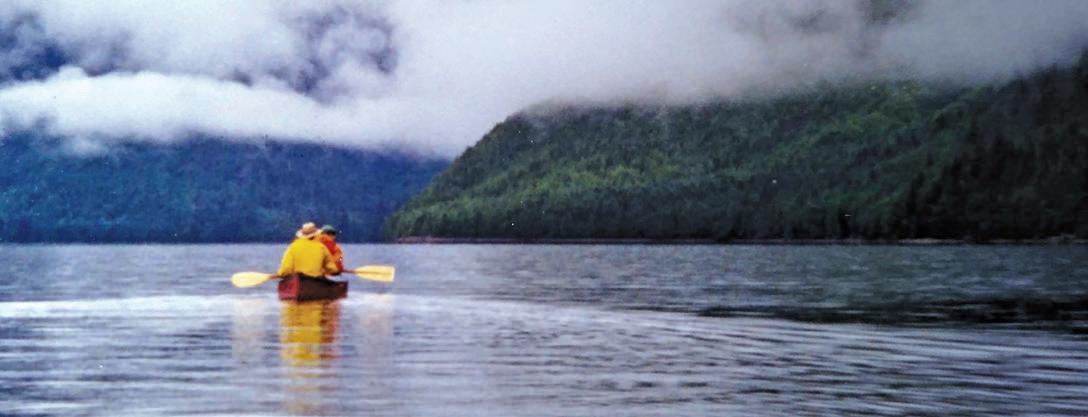
cold and wet and I remember thinking, “Wait, why is this fun?” The question itself made me even more irritable. In the midst of a crystal-clear shallow channel floating above thousands of bat stars that were all the colors of the rainbow, and all manner of anemones and sea slugs surrounded by soaring snow capped mountains, my surly attitude suddenly seemed ridiculous. I was determined to change it. It helped when we ran into a group of kayakers who were on a guided tour from a “mothership” cruise. It was three couples on a large sailboat being shuttled around by a boat captain who knew the islands— they had soft dry bunks to sleep in every night and someone cooking dinner for them, that sounded nice.
At some point during the day, the drizzle turned to floating mist that faded into the atmosphere; the dark gray turned light gray and the sun burned its way through the seemingly impenetrable sky. I suddenly felt euphoric. Yes, this was fun! But it was more than fun. I was learning about myself in conditions that seemed
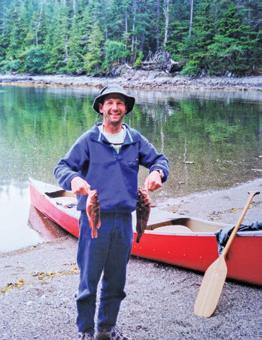
difficult at the time and understanding that the best things in life are not necessarily easy. My spirit cleared with the weather and we made it to a beach camp on Kat Island and broke out the box wine. We were in paradise.
The following days were filled with light and dark, black bears on the beach, sandhill cranes rising from the beach, rain and sun. We did a 6 mile open water crossing to Hot Springs Island for a glorious soak in hot water surrounded by scenery so beautiful it defies description, because you can’t insert the feelings into the words of any description.
We visited Tanu, an ancient Haida village site and the watchman there walked with us around the village that had long since been rounded into mounds of thick luxuriant moss. It was a haunting yet marvelous place.
Long days of paddling, sleeping on rocky beaches, and challenges innumerable finally led us to our last day of paddling. I think we were all ready for some comfort and hot food. It was raining so hard on that last day that
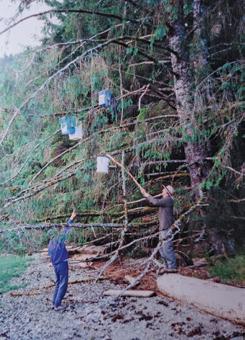
we had to bail water from the boats as we paddled. At least it was warm rain, in the 50s. We were all wearing rain gear and Teva sandals, and were thoroughly soaked from rain and sweat as we finally made it to Moresby Landing. Here, we began the long transition back into “real life”, which we began to question. Which life is more “real”—the one where you do what you must to survive or the old paycheck life that we were all going back to? We weren’t quite sure.
The four of us did several more long canoe trips before the “paycheck life” allowed us to buy into bigger boats and different adventures, but we still talk about Haida Gwaii. That trip changed all of us.
Now, we’re looking at charts and distances again, dreaming of the possibilities of having a picture of Sea Lab in front of a glacier on our wall for someone to ask about. I think it is possible!
Dennis and his mate, Tekla, reside in Auburn, WA and usually keep Sea Lab in the water at Tyee Marina.
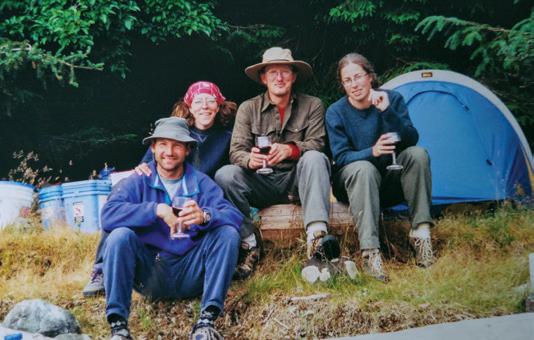
48º NORTH 26 MAY 2024
Al and Sue ahead with low sky and calm sea.
Dinner ready for the Svea stove. Evening chores, there are bears on these beaches!
(Left to right) Dennis, Tekla, Al and Sue —real life doesn’t get better than this!




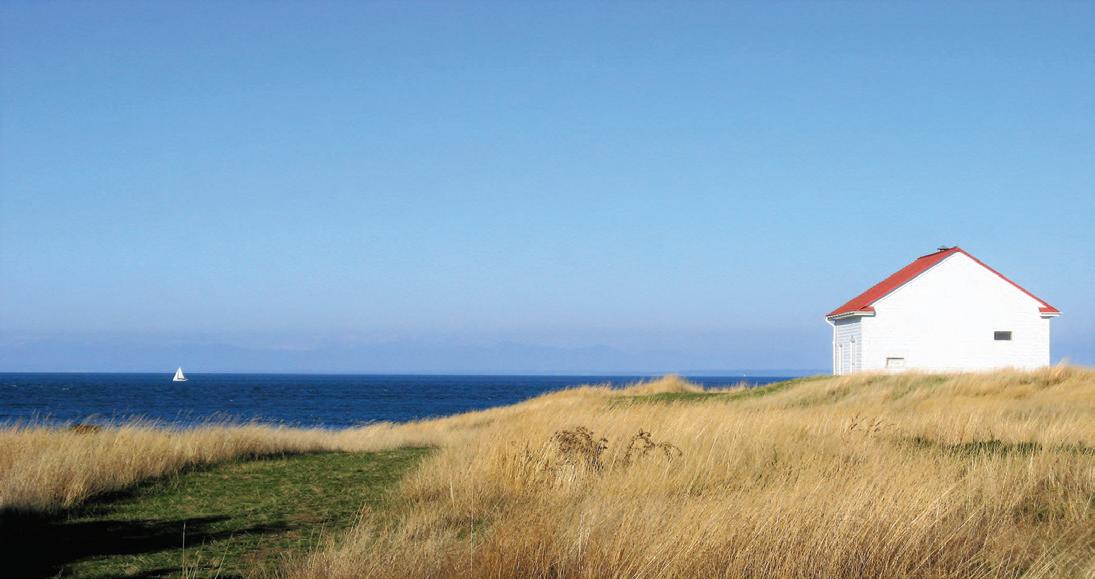
MICHAEL VAUTOUR VAUTOUR MICHAEL MICHAEL VAUTOUR MICHAEL VAUTOUR VAUTOUR MICHAEL VAUTOUR MICHAEL VAUTOUR MICHAEL VAUTOUR VAUTOUR MICHAEL VAUTOUR
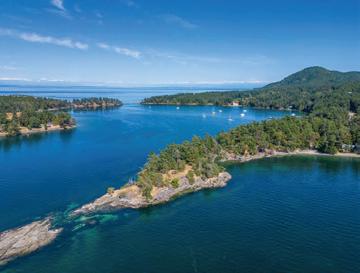



CELL: 250-818-3919
CELL: CELL: 250-818-3919 250-818-3919
CELL: 250-818-3919
CELL: 250-818-3919
CELL: 250-818-3919
CELL: CELL: 250-818-3919 CELL: 250-818-3919 CELL: 250-818-3919
www.DocksideRealty.ca www.DocksideRealty.ca www.DocksideRealty.ca www.DocksideRealty.ca www.DocksideRealty.ca www.DocksideRealty.ca www.DocksideRealty.ca www.DocksideRealty.ca www.DocksideRealty.ca www.DocksideRealty.ca www.DocksideRealty.ca
USD

One of the most stunning properties in the Southern Gulf Islands! This Spectacular 5 acre peninsula located between Winter Cove & Veruna Bay Features a deep water dock, 3000’+ of shoreline including your own private beach, main residence, separate guesthouse, & a perfect building site near the point! The finest materials & construction methods were utilized in these one-of-a-kind jewel box buildings built for an architect/owner. The stone & cedar shingle home is constructed with heavy timber glue-lam beams, vaulted ceilings, custom rift white oak doors & cabinets, vertical grain fir paneled ceilings, interior trim, doors & cabinets. The magnificent stone fireplace creates the heart of the home. Heated large format slate tile floors extend onto the patios. Exceptionally crafted metal roof, skylights & large windows provide natural light. Top of the line appliances. Come live your best life!
According to CMHC mapping, the Southern Gulf Islands are currently exempt from the Foreign Buyer Ban (buyer to verify).
One of the most stunning properties in the Southern Gulf Islands! This Spectacular 5 acre peninsula located between Winter Cove & Veruna Bay Features a deep water dock, 3000’+ of shoreline including your own private beach, main residence, separate guesthouse, & a perfect building site near the point! The nest materials & construction methods were utilized in these one-of-a-kind jewel box buildings built for an architect/owner. The stone & cedar shingle home is constructed with heavy timber glue-lam beams, vaulted ceilings, custom rift white oak doors & cabinets, vertical grain r paneled ceilings, interior trim, doors & cabinets. The magni cent stone replace creates the heart of the home. Heated large format slate tile oors extend onto the patios. Exceptionally crafted metal roof, skylights & large windows provide natural light. Top of the line appliances. Come live your best life!
According to CMHC mapping, the Southern Gulf Islands are currently exempt from the Foreign Buyer Ban
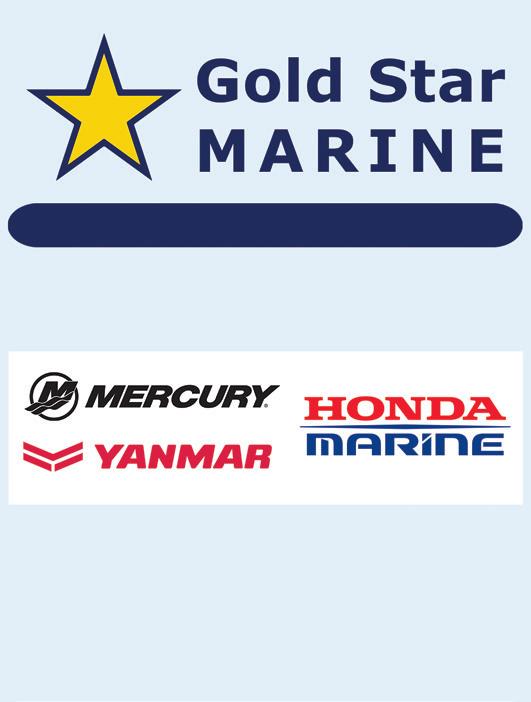

48º NORTH 27 MAY 2024
michael@docksiderealty.ca Email: Email: michael@docksiderealty.ca michael@docksiderealty.ca Email: michael@docksiderealty.ca Email: Email:
michael@docksiderealty.ca Email: michael@docksiderealty.ca Email: Email: michael@docksiderealty.ca michael@docksiderealty.ca
Email:
michael@docksiderealty.ca
LIVE THE DREAM! MLS 937530 • $4.6M
• $3.4M
CAD
READY… GO!

FINDING YOUR FOOTING FOR THE JUMP TO EXTENDED CRUISING
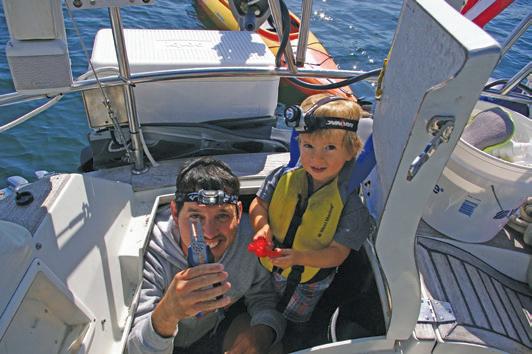
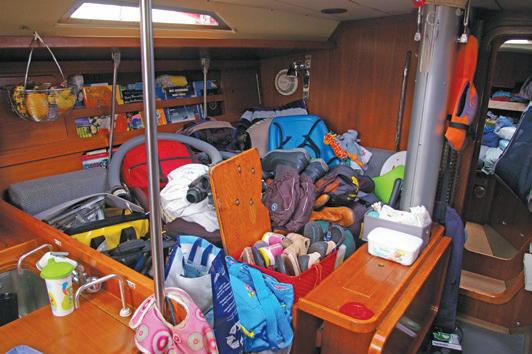
Tools, sailing gear, clothes and more—emptying out and reorganizing storage spaces is a helpful task.
by Andy Cross
Congratulations, you’re making the leap or are seriously scheming how to do so. After many happy long weekends and blissful week-long cruises in local waters, you’ve successfully secured a month or a summer or maybe even longer to get out for an extended cruise. Now, the real work begins to get your boat ready to cast off the dock lines for new adventures ahead.
No matter what your timeline or destination may be, it’s exciting to begin preparing for the voyage of a lifetime; but it takes a lot to get to this proverbial starting point. Planning a route and readying a vessel for cruising can be overwhelming, and the uncertainty of what will come when you leave the friendly confines of your home marina can be uncomfortable. While you, your boat, and your dreams are unique, luckily others have crossed these potentially rough waters and can offer insight.
When preparing our Grand Soleil 39, Yahtzee, to depart Seattle for extended cruising, the lists were so long and the projects so intimidating we wondered if we’d ever leave. Indeed, the process was daunting, but we learned so much before we even started sailing north to Alaska. Most importantly, I can confidently say that all the effort was worth the reward. Hopefully some of what we learned then and over the last decade of cruising can be helpful to you in your journey.
48º NORTH 28 MAY 2024
Always fixing things. The author and his son, Porter, tackle an electrical project deep in Yahtzee’s stern locker in remote British Columbia.
KNOW YOUR BOAT
The best way to know what your boat needs is to use it. One of the biggest factors that helped our immediate cruising success was that we accumulated a lot of local experience on Yahtzee first. We sailed and raced after work, and used any time off of work to enjoy the waters of the Pacific Northwest. Of course, we also set aside time to work on the boat, but we carefully prioritized projects and tried not to let them get in the way of actually using our boat.
Lucky for us, the Salish Sea has an embarrassment of cruising riches. From nearly any harbor in the PNW, you are mere miles from the next anchorage, marine park, or port. It can be both fun and valuable to explore locally and get used to living on your boat with your crew where passages can be short and resources near at hand. Once you leave on your trip, that’s exactly what you’ll be doing but you’ll almost certainly have to be more selfsufficient. Overnights and weekend trips help you get to know your boat’s systems away from the dock. How well does your anchoring setup work? Do your batteries hold a solid charge when you’re not on shore power? Do you have solar panels installed and, if so, are they keeping up with what you’re using? How comfortable are you getting in and out of your dinghy with a bunch of gear or provisions?
Slightly longer trips reveal other important questions. How often will you need to fill water and fuel, or pump your holding tank? Where are the undiscovered storage spaces for additional food? How frequently do you feel like you need time ashore? It’s also important to sail your boat in a variety of conditions.

Having inspection ports in your water and fuel tanks is a must for long distance cruising.
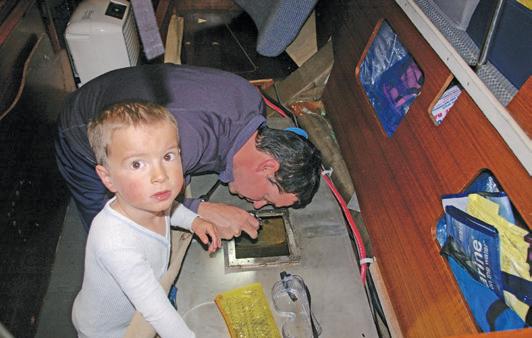
Practice skills like reefing and heaving-to so you know what to do before heavy weather arises. And, if you have one, become proficient at flying your spinnaker when the winds inevitably go light; it’s a fun and rewarding skill to master. Rig jacklines in calm conditions and clip in with a tether and harness to get used to moving up and down the deck while the boat is underway. You’ll thank yourself later when you have to do it at night or in the midst of a nasty blow.
Installing new lower shrouds and tangs was a key project completed before shoving off for full-time cruising.
When you’re bound to the dock, get to know every nook and cranny of your boat—even if you’ve owned the boat or have lived aboard for years. Storage of food, water, spare parts, tools, and even garbage is going to be key when you’re cruising, so clean out lockers on deck and down below, and then reorganize them to figure out what will maximize efficiency for the way you will use the boat. This can be hard, but while things are out, purge any items that you really don’t need. The simple act of moving on from unnecessary clutter can be extremely freeing and you’ll create more space in the process.
One point of caution in getting your boat ready, though, is to resist the urge to make everything “perfect” before you leave. Perfection is not realistic, and can lead to stress or more time spent at the dock instead of… you know… actually being out cruising.
BE HANDY
Get ready to fix stuff. Lots of stuff. Rightfully so, every experienced cruiser will harp on the need for spare parts, so I won’t go into great detail about what you actually need. What’s important to remember, is that those spare parts are useless if you don’t know how to use them to fix what is broken.
When we first started cruising full-time in the Pacific Northwest, we thought we had our heating system figured out. In truth, we’d really only tested it a few times while off the dock. Once winter came and we were no longer on shore power and able to use space heaters, I was forced to evolve into a capable heater repairman to keep the temperature appropriate for a family with a baby and toddler. By becoming proficient at this, we were able to keep the boat dry and comfortable, which led to a happy crew and better cruising. Still, I had to learn it on the fly when we were in serious need of a functioning system.
That’s just one example and, over 10 years later after countless cruising refinements, I’m still fixing things on a near daily basis—everything from splicing lines to simple electrical
48º NORTH 29 MAY 2024
Knowing how to fly your spinnaker is essential in the light airs of summer in the PNW.

jobs like wiring cabin fans to solving plumbing problems with an annoying mish mash of parts from various countries. This all comes back to knowing your boat. The more you’ve worked on it before leaving, the more you’ll be able to do while you’re out.
HAVE A RELIABLE ENGINE
Yes, notable cruisers have sailed many thousands of miles without an engine and that is a fine way to go if it’s what you choose. But the bottom line is that you’re not getting far if you don’t have wind, and if you encounter adverse currents like we have throughout the entire length of the Inside Passage, forget about it. Moreover, engineless cruising is not what most of us choose, and being incidentally engineless can be anything from an annoyance to an emergency. You need an engine and enough fuel to push you through calms and fight headwinds and contrary currents. We always hoped to sail as much as possible, and we found that lots of miles can be made under sail; but it’s a fact of cruising life that if you don’t play it right with weather and tides, you’re not getting very far very fast, or you could find yourself in some exceptionally dangerous situations.
Unfortunately, we’ve learned firsthand about the frustrations of not having a working engine at various times in our cruising adventures. When it doesn’t work, the stress can be overwhelming. Before shoving off, have a competent mechanic go through your engine’s systems with you and consider getting an oil sample tested. Clean your fuel tanks and make sure you have a way to easily inspect them. And then stay on top of the

engine’s maintenance schedule as you put more hours on it.
Another thing to note here is that mechanics, parts, and services for your engine usually get fewer and farther between as you go. It’s a good idea, then, to be comfortable with most of the general maintenance that your engine may need. Be self reliant—carry spare filters, fluids, and parts, and know how to change many of them in the event of a failure.
PLAN FOR PROVISIONS
Self sufficiency is also the name of the game when it comes to provisioning for the amount of crew you have aboard. Sure, you can find food anywhere you find people, but bear in mind that expense and availability of certain items changes in more remote locales. Getting fresh fruits and vegetables can be somewhat challenging in rural areas of British Columbia and Alaska, yet there’s not much you can do about it. Stores will either have it or they won’t, and the farther from peak season you arrive, the less likely it will be that stores are fully stocked. Because of this, we’ve made sure to have an adequate amount of canned fruits and veggies to accommodate the times when stores were lacking. Additionally, for items that we know our crew loves—like certain types of snacks and drinks—we buy extra before leaving.
Fresh water is another important consideration. How much water does your boat carry and how much does your crew use per day or week? Ideally, you want to refill before you run out, so what’s the plan for where you get that water? Reliable watermakers are becoming more common onboard many cruising boats, but you need to know what conditions they can be run in. Most watermakers like to have clean ocean water running through them to make the best fresh water. If you’re in silty areas, or places where there is more algae in the water, your watermaker might not be able to keep up or you may risk damaging the unit’s membrane. Consider whether or not your boat or journey requires carrying some amount of emergency drinking water in jerry cans.
GARBAGE TIME
Practice before you get there!
Sailing offshore with a reef in the mainsail and a partially furled genoa.
Now that you’ve procured all that food, you’re going to have to consider the amount of garbage that comes with it. Similar to provisioning, you need to think ahead about where you’re going to store your garbage aboard between drops, and then where you’ll actually be depositing it ashore. In general, most marinas you’ll come to will have dumpsters for you to get rid of your waste, but some don’t, which means you have to carry it on to the next stop. We’ve even come across places that charge a fee per bag of garbage. Also, recycling options vary from port to port. Some will only have recycling for paper, glass, and aluminum, and at others you’ll be able to recycle plastic. It just depends.
From the Pacific Northwest to Alaska, down to Mexico, Central America, and now the Caribbean, the longest we’ve gone without being able to get rid of our trash has been slightly over two weeks. In the meantime, it helped to separate paper and use it to start our beach fires (when appropriate, of course). We separate compostables and recyclables into different containers, which, on our boat, makes it easier to store. Besides
48º NORTH 30 MAY 2024

burning your paper ashore, another tip is to try and get rid of bulky and unnecessary packaging after you provision and before leaving a marina. Also, if your crew enjoys beer, we found that forgoing bottles for crushable cans saves a lot of space.
GEAR UP, STAY POSITIVE
I don’t know who needs to hear this, but even in the summer, it rains… a lot. We found this out on our first summer of cruising in Southeast Alaska, when it rained for what seemed like days on end. Fortunately, we were ready for it—and most sailors from the PNW will be too. That said, it’s worth mentioning that, unless you’re heading straight for the tropics, having a quality set of foul weather gear and boots is imperative. Whether going ashore for beach-combing or hiking, or heading out for a dinghy or kayak exploration, you’ll want to be able to discover things beyond the boat, no matter the weather. If you don’t have the gear, you’ll be wet and miserable. We invested in two sets of gear for our crew, which was one of the best things we did for cruising the Inside Passage. While wearing one set, the other set could be drying; that way we weren’t constantly getting in and out of damp foulies.
Along with proper clothing, pack a positive attitude. No matter where you are, you can’t change the weather, you just have to adapt to it. And if you’re into meeting other cruisers along the way and all you do is complain about the weather, you won’t make fast friends—listening to other sailors incessantly complain about the weather isn’t fun. Just take it as it comes and enjoy where you are!
DON’T BRING… A SCHEDULE
If there is one piece of advice that I can’t stress enough, it’s to not cruise on too rigid of a schedule. Sure, you’ll have an overarching plan of where and when you’ll be in certain areas, but within that plan we’ve found it best to have numerous options. And there have even been times when we’ve completely changed our itinerary on a whim based on weather or if there was a particular destination that worked or didn’t.
I’ll never forget meeting a salty,
70-something-year-old commercial fisherman on the docks in Sitka, Alaska, who was intrigued by our family’s journey and stopped to chat. He asked me where we were going next, and when I said I wasn’t quite sure and that we didn’t really have a hard and fast timeline, he answered. “Good. The most dangerous thing people like you [cruisers] bring to Alaska is a schedule— glad to hear you’re not on one.” He then told us about some of his favorite local anchorages and we ended up visiting several of them, which we would have otherwise missed.
Oftentimes, these experiences of spontaneity—of meeting someone or finding an unexpectedly great spot—are what create the best memories. In many ways, this is what the cruising life is all about.
You have our best wishes on your upcoming extended cruising adventure! Plan as much as you feel is necessary for your boat and crew. Then, when the time comes, cut those dock lines and get out here—a big world awaits.
Andy Cross is the editor of 48° North. After years cruising the Pacific Northwest and Alaska with his family aboard their Grand Soleil 39, Yahtzee, they sailed south and are currently in the Caribbean Sea. You can follow their adventures at SailingYahtzee.com


Rainy Alaska! Having proper foul weather gear is a must for happy cruising.
48º NORTH 31 MAY 2024 Mobile Fuel Polishing Serving The Entire Pacific Northwest • 360-808-0505 Seventh Wave Marine www.seventhwavemarine.com seventhwavemarine@olypen.com Fuel Filtering...Tank Cleaning (Water, Algae, Sludge and Particle Removal Service) Changing filters often? Don't let bad fuel or dirty tanks ruin your next cruise! Whether you're cruising the Pacific Northwest, heading for Alaska, Mexico or around the world, now is the time to filter your fuel & tank before trouble finds you out there!
The Yahtzee crew ready to head for shore to drop garbage and top up on food.
HIGH SEAS ADVENTURER
AN INTERVIEW WITH KIRSTEN NEUSCHÄFER, PART 2
 by Joe Cline
by Joe Cline
Last month, 48° North had the privilege to sit down with the first woman to win a solo round-the-world race, South African sailor Kirsten Neuschäfer. Kirsten won the “retro” Golden Globe Race (GGR) in 2023, a non-stop circumnavigation using smaller boats and technology that was available during the initial GGR in 1968 (no GPS, nor modern weather info or communication). In the first portion of the interview (published in the April issue), we learned lots about her background, her vast offshore experience, her comfort with more traditional maritime skills, and her Port Townsend built Cape George 36 Minnehaha. Joining in the conversation was two-time Race to Alaska winning skipper, Jeanne Goussev. This month, we’ll hear more details about Kirsten’s non-stop circumnavigation during the GGR.
Joe: Tell us about your approach to getting rest?
Kirsten: Fortunately, one of the concessions they had to the 1968 technology was that we could have an AIS alarm; it didn’t give you a display and a ship’s name and position like you’d get with a modern system, but it would warn you that there was a ship in the vicinity. It was nice having that alarm, because at least you could get rest without fearing the whole time that you were going to get run down by a ship. But then, of course, it didn’t always help in foggy conditions— the alarm would go off, but you couldn’t see anything, and you couldn’t talk to it because ships aren’t used to being called “Big ship, big ship,” they’re used to their name being used.
If I was in a shipping area and I was
tired, I’d set an alarm so I wouldn’t sleep for too long. Otherwise, I pretty much took the rhythm of naturally waking up every one to two hours to do a logbook entry so that I’d have my course—my boat’s heading and speed—to do my dead reckoning. Otherwise, it depended mainly on where I was, like in the trade winds where the winds are pretty settled, I’d get better rest than if I was somewhere the winds were shifting all around.
How different is this rhythm than what you've found on other offshore passages?
The majority of the trips I’ve done were with crew, so that changes because someone is always on watch, and there’s a fixed watch roster. When you’re off watch, you can sleep deeply, because if you’re needed, you’ll be called. On your
own, you don’t sleep that deeply because you don’t want to miss something. I got into a sleep pattern where I’d very easily wake up, but I’d also very easily go back to sleep again. If the boat’s motion changed because the wind had changed, and the self steering was putting us on a new course—I’d feel the difference in the motion. Or, if there was a funny noise or something like that, I’d naturally get up. But I could get up, do my check or whatever I needed to do to the sails, and then go back to sleep again.
The other difference, of course, was that it was a race, so I was pushing myself harder. I was forcing myself to be more proactive to tweak more speed out of the boat. It was really helpful to do the two long trips beforehand (editor’s note: in Part One, we learned
48º NORTH 32 MAY 2024
that Kirsten sailed 15,000 solo ocean miles on Minnehaha before even starting the GGR). They weren’t racing trips, but they were training. So I was able to take much of it in stride. There were only very few occasions I felt seriously fatigued. One of those occasions was right at the start because of all the build up and all the public stuff going on. It was actually a great relief to get out to sea because I could finally get some rest!
Any ocean passage is going to involve some heavy air or storm sailing, tell us about your experience with that on this race. What techniques did you employ?
One of my storm tactics on a monohull has always just been to heave-to. And I didn’t necessarily use that each time on Minnehaha on the race, because if the storm is coming from behind and you can use some of its energy to keep moving, it would be better than grinding to a halt by heaving-to. If I had a storm that was coming up from behind, my tactic was to trail warps behind the boat. That worked really well in conjunction with the Hydrovane, because she could really keep her stern to the seas, but she’d keep her speed up at maybe 4 to 5 knots in those conditions. I felt that she was well under control, but what wasn’t that great about that storm tactic is that you get breaking waves coming over the stern and there’s a risk that some damage gets done to the stern, like the vane or other mountings on the stern. I had relatively minor damage, but on a whole, I felt the boat was safe. That was important.
If the wind was against me, for example off of the Falkland Islands, my tactic was to heave-to and Minnehaha did that incredibly well. It was way more comfortable, there weren’t problems with damage or things getting broken or the cockpit filling up. My only concern there was slipping sideways down a wave and then the Hydrovane coming to some grief. That was trial and error—I didn’t disengage it because then it swings too freely, but I also didn’t lash it tight because there’d be no give if it did slip down a wave. So I had it set with the vane pointed to windward, so if the waves did put a lot of pressure on the rudder, the vane would move, but it wasn’t swinging wildly.
Jeanne: Were there times that hand steering was better than using the Hydrovane?
In storms, I didn’t find it helped, because when going slow downwind I didn’t find that I could keep a better course than the Hydrovane. With the spinnaker or really surfing waves, then hand steering was better. But in the storm conditions, we weren’t doing crazy speeds, and that’s what I was trying to stop—having to do those crazy speeds and sit in the cockpit, then there’s a good chance of the boat maybe capsizing or you getting washed over. The best survival tactic seemed to be to set up everything so the boat can keep control of itself and you can stay down below and out of harm’s way.
Joe: Of those stormy experiences you had on the race, does any loom largest in your memory?
No, my first proper sail on Minnehaha was basically into a 50-knot storm. After that, everything seemed like, “Eh, it’s alright, we’ve been through this already.”
One of the storms during the race, they did warn us. I could hear from the New Zealand forecast that there was a very big system coming up behind. It’s often the anticipation that’s worse than the actual storm. I did my best to go as far north as I possibly could. In that moment, I didn’t ever have to think, well should I stop going north and cut the corner and make sure I’m ahead of the other competitors. In that moment, it was like, “All that matters is to let the storm pass without breakage.”
What did pushing your boat, which most would not consider a performance boat, and pushing yourself mean to you?
For example, in the trade winds during a squally night, if I was not racing I would be inclined to drop the spinnaker. Even with crew, I might say let’s just get rid of the spinnaker and not risk that kind of breakage. But in a race, it’s not like that. When squalls are around, you’re going to have to be on your toes, because you’ve got the spinnaker up as much as you can for as long as you can. It was actually a great joy, because it was the first time in my sailing life that I could sail for the sake of sailing, where I didn’t have to think the whole time about not damaging
anything. I didn’t want to damage anything, but the spinnaker was there to be used, it wasn’t there to hand over to an owner with his new boat. So in that sense, I did push harder. That also went for how soon I would reef. If I thought I was going to go faster because the boat was going to be heeling less, then I’d reef sooner, but otherwise, I’d definitely wait longer to reef; I’d wait way longer to drop the spinnaker. I’d sometimes sail where I was really on the edge and I’d think to myself, “This is actually not how I should be sailing right now, but we’re getting good speed and it still feels stable, so let’s keep going!”
Did you find yourself on the other side of that edge?
Yeah, I had a few broaches with spinnakers. I had a few moments where I saw a squall but asked myself, “But is it going to be a bad squall?” And I didn’t take the spinnaker down and then regretted it when dropping the spinnaker in sub-optimal conditions. Definitely in the Southern Ocean with that twin rig, I was pushing the boat way harder than I should have been. Nothing happened, there were no broaches or anything funny, but it was one of those moments when I said, “If something happens, there’s going to be bad breakage.”
Jeanne: It’s an interesting balance, on a 235 day race, to strike between preservation and speed.
Yeah, that’s what breaks it for some people—they just push too hard. For such a long race like this, my previous more conservative approach to sailing that was all about preserving the a delivery boat or a charter boat might have stood me in good stead. Maybe I pulled the plug a little earlier than a real hard racing sailor might.
Joe: Aside from the win itself, one of the great stories from your race is when you rescued fellow competitor Tapio Lehtinen, whose Gaia 36 sank. Can you share that story with us?
Well, I heard a competitor was in distress because we were all informed by the race organizers, and I knew I was probably the closest to him. After I confirmed that by contacting the race
48º NORTH 33 MAY 2024
organizers, in that moment, the only thing I wanted to do was help. You’d feel like an idiot if you won the race but you left your fellow distressed competitor behind, you know?
There were a few things that struck me about the rescue. One is just how difficult it was to see a life raft on a big rolling ocean, even though the conditions weren’t extreme by any means. The other interesting thing for me was how positive Tapio was. He was full of jokes and laughter, and to me that was a lesson in life. If I’m feeling down because things aren’t going my way, I just just have to think of poor Tapio—he lost his boat and still kept a good sense of humor about it.
The other thing that was interesting was the actual transfer of him onto the ship. Because it isn’t something you practice in your daily life as a sailor. That was the most adrenaline for me— getting as close as I could to the ship and feeling like, “This is crazy, I shouldn’t be anywhere near this big ship in the middle of the ocean.” It helped that the ship formed a lee. The captain was cool because he really did park it up square to the waves. But still, in your mind you’ve been trained to stay the hell away from big ships at sea.
What was one piece of gear or boat equipment that you found to be the most essential to your race?
The self steering. On a race like that that’s so long, and you’re on your own, it’s really important. Without it, you’d get a lot less rest and you’d sail a lot less efficiently.
Thinking about the history of the original GGR with three very famous sailors and their stories—Knox-Johnson being the first sailor to win a non-stop round the world race, Moitessier bailing on the race to go around again, Crowhurst’s tragic unraveling—we have a sense about the relationship each of those sailors had with the sea. As a GGR winner, I’m curious about how your relationship with the sea evolved during your 235 days, or did it?
I don’t know if it changed. It might have deepened, because I feel a deep sense of gratitude that the sea allowed me to sail right around the globe without coming to grief. I’ve always loved the sea, I like
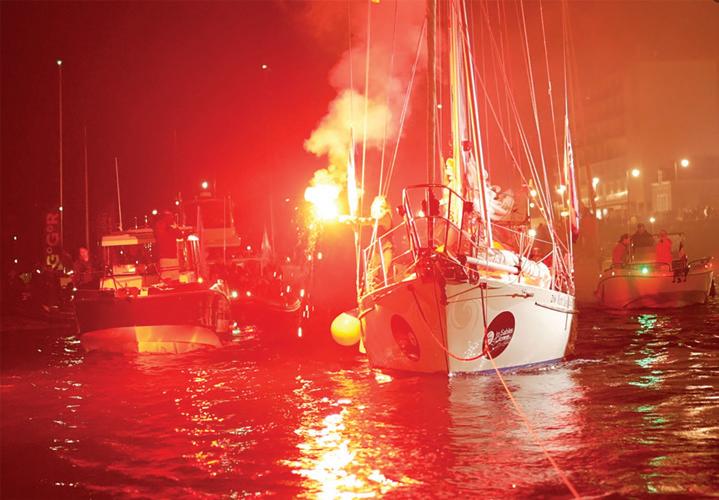
being outdoors, I like being in nature, I like being on the ocean—and all of those things were affirmed on this race. I didn’t want to be out there most looking forward to the end of the race, like I heard one of the other competitors say at one point. The thing I was most looking forward to was being out there, seeing the boat really perform, and enjoying the ocean.
I had a lot of moments when I was so in my groove, in my own little bubble, so enjoying myself that I was like, “I must be one of the luckiest people on the planet, because my whole purpose today and every other day that I’m on the race is to get up, enjoy myself, look after the boat, and make the boat sail the best I possibly can.” And then there were other moments when I would try to just chill out a little bit. It’s not only about racing the whole time. It’s about appreciating the privilege to be in a very beautiful, very pristine environment that not everyone can access. I still miss being disconnected and just with the ocean.
Jeanne: I like to go to sea because it offers the opportunity to catch my breath in a lot of ways I can’t on land. Were there moments out there that made you just pause and catch your breath and be in awe?
Yeah, those were moments when I didn’t know if I wanted this to end. The double blessing of the Golden Globe
Race was not having modern technology. That’s one of the things I’ve always enjoyed about being at sea—you can switch your phone off and pack it away because you’re not going to get a signal out there. The sat phone is more tedious, so if you must communicate, you can, but it’s not that constant connectivity. I wouldn’t want to go to sea with Starlink, for example. That would spoil some of it for me. I felt more refreshed when I stepped off the boat at the end of the race than I had for a long time. It allows you to appreciate that a lot of the things you’re worrying about in land life are pretty abstract. They’re not real problems that you have to solve.
Joe: Lightning round — describe a situation on the race when you felt the following emotions:
Joy: One of my most joyous moments was in the Southern Ocean in 50-plus knots of wind, with really big, smooth, regular, long-period swell. Minnehaha was just surfing at crazy speeds— speeds she probably shouldn’t have been sailing at, I didn’t have a GPS, but judging by the wake and the rooster tail she was shooting, I would guess maybe 12 or 14 knots—and I was feeling a bit of adrenaline, but also joy. I thought, “This is cool, this is great sailing.” The sun was out and it was crisp, clear air, and the sea was full of energy but in a kind way as
48º NORTH 34 MAY 2024
Kirsten and her Cape George 36 Minnehaha on their way into port after finishing first in the Golden Globe Race.
opposed to a storm that wants to damage you all the time.
Fear: I didn’t have any real fear moments where I feared for my life. I definitely had moments of anxiety when there was a storm approaching, like 900 miles away from Cape Horn where it was more the anticipation of the storm that was forecast to be a big one. I was thinking, “Let’s hope this goes well.”
Relief: I was very relieved when the wind filled in after sitting for two weeks in the doldrums. Two weeks was too much, and it was a weight off my heart when the boat finally started moving because the wind came back.
Peace: I had a lot of peaceful moments. I felt pretty at peace with myself when I got around the Horn. That’s the thing you want to get past, because once you’ve passed it, you’re on the run home and you’re getting away from the stormier latitudes.
If you could relive any single day from
the race, what would it be and why?
One of the days I’d love to relive is the 24 hours that I was bobbing around Cape Town, becalmed. There was so much wildlife around me—humpback whales right next to the boat. At the time, I don’t think I appreciated that as much as I should have, I was frustrated because I wanted to move. It was very special, but if I relived it, I would think, “Thank goodness there’s no wind right now, because if there was, I wouldn’t be seeing what I am.” I might even go for a swim or something.
If you could be transported to be sailing anywhere in the world right now, where would you go?
The Northwest Passage. When the time comes, if I could do that, that would be really cool.
You’re a hero to lots of people. If someone wants to follow in your footsteps, what’s one piece of advice you’d give them?
Take people’s advice and value it, but it’s still your project. Do it your way. You don’t have to copy someone else, even



if you’re doing a trip that’s already been done. It’s going to be your journey.
Jeanne: The GGR is an adventure race. You’ve done a lot of adventuring and long journeys of self discovery. So why adventure?
It’s the thing that enthuses me most in life. It’s the one thing that makes me feel really happy and alive. It’s my thing. I feel more alive doing adventures than sitting around and doing adventures of the mind. But for me, I like to be out there in the physical world. It brings me closest to nature.

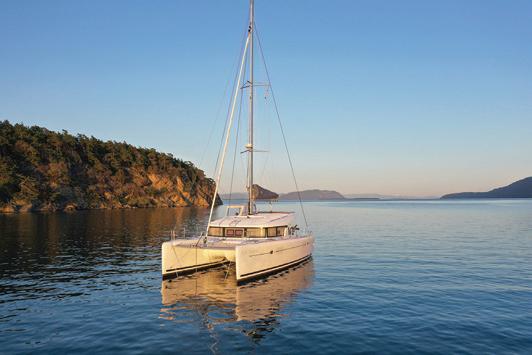

48º NORTH 35 MAY 2024 sanjuansailing.com • 360-671-4300 Evergreen-studded islands, abundant wildlife and peaceful anchorages. Experienced or new to boating, we can help you discover the joys of cruising the beautiful San Juan Islands! Beginner to advanced liveaboard courses. Sailboat and powerboat bareboat charters. Guided otillas too! Cruise the San Juan Islands! INSTRUCTION • BAREBOAT CHARTER • BROKERAGE
NxNW NORTHWEST RIGGING Rig locally Sail globally 360.293.1154 • www.nwrigging.com • info@nwrigging.com
Joe Cline is the Managing Editor of 48° North
Kirsten sitting down to chat with starstruck interviewers/fans Joe and Jeanne (right).

TENDER FEELINGS
THE VALUE OF A GOOD DINGHY
by Emma Biron
There comes a time in many major rebuilds when thoughts of infidelity arise. You’ve just spent $600 on a spray foam insulation kit; emptied your boat’s interior of every last cushion, book, and can of baked beans; taped over the galley varnish and sprayed the hull. Three quarters of the way through the task, the curing agent stops dispensing, but it takes your horrified mind half a minute to unclench your hand on the trigger of the nozzle—and now 30 solid seconds of toxic molasses is oozing into your quarter berth. It will take your remaining patience to clean up the mess and will lend much validity to the recommendation your boyfriend gave
earlier that you simply hire a professional to do it.
While toiling on hands and knees inside the cramped innards of your “labor of love”, you will have a flash of inspiration— what you really ought to be doing is rebuilding a dinghy. And you will walk away from your intimidating project to rebuild a Craigslist hull that you picked up for half the amount you spent on that insulation kit. As long as you eventually finish the bigger project, there’s no harm in temporarily diverting your attention to a smaller project that still gives the impression that you are working towards your greater cruising goals. Right?
We justify these lapses of loyalty by asserting the truth that every good cruising boat needs a good tender, but the search for a “good” tender can be elusive; in the world of boats there are
48º NORTH 36 MAY 2024
so many compromises. When I first re-launched my sailboat—a classic, mid-century fiberglass sloop—I thought I was in love with my tender. It’s a fiberglass pram dinghy with wooden rub rails that was so solidly built it took the strength of two able bodied adults to pull it up onto a dock. That dinghy was so stiff that I could take a running jump into it without fear of falling overboard.
Ironically, my cruising boat was rather tender when it was first launched—due to the extensive refit, the ballast ratio had changed dramatically—and now the boat seemed to heel over if you leaned in to pass the salt at dinner. There was no possibility of carrying my hefty dinghy on the bow or in the non-existent davits, so I always towed it. One memorable day I was unwisely sailing during a gale warning. Each time I ran down the face of a wave, I would glance anxiously over my shoulder to watch my dinghy come racing after me, hoping that when it overtook me it would do so either to port or starboard of my sailboat’s transom.
My experience of that dinghy as a battering ram motivated my decision to acquire a tender that would be small and light enough to go on the bow. Most cruisers choose inflatables for their performance and practicality, but I love rowing and dislike motors. So I kept a lookout for a small, light, used rowboat and, after a few weeks, saw a posting. I intended to merely repaint it black and white to match my sailboat; but my boyfriend, Trevor, wanted to start a dinghy racing club on Friday evenings in Finn Bay, and suggested my new tender could be refitted as a sailing dinghy. This would involve fiberglassing a slot for a dagger board and a sleeve for a mast; making a daggerboard, tiller and rudder; and creating buoyancy so that the dinghy wouldn’t sink if it flipped.
“That seems like an awful lot of extra work,” I protested feebly, thinking of all the unfinished business I still had with my Pearson Triton. Trevor, who had just finished re-sheathing a customer’s 32-foot boat in plywood and epoxy, and would begin fairing it next, cheerfully declared that he would refit my dinghy for me. His customer, an affable longtime friend, had already agreed to fund the building of a sailing dinghy in concurrence with the rebuild of his sloop. Four dinghies: the customer’s, Trevor’s, and my new and old dinghies would become the fleet for our Friday night race club.
Maybe it was a case of a big project needing a big distraction, but in the end I got behind the palate-cleansing side project with enthusiasm and sewed a new sail for Trevor’s dinghy—a roached-out, tanbark marconi that matches the tanbark sails on his ketch. The customer’s dinghy is a Sabot hull and an Opti rig, with a seat that runs fore and aft and is painted a bright orange—as unique and cheerful-looking as his sloop. And my little rowboat has an Opti rig and is decked out with beautiful wood accents, a callback to my cruising sailboat. My old pram dinghy is the ugly duckling of the bunch that we threw together on the cheap with duct tape and driftwood spars.
Although the dinghy rebuilds technically diverted us from our “real” work, the dinghies gave us a chance to continue sailing even when our boats were on land, mid-rebuild. It strengthened our resolve to keep sanding through the sweat of a hot summer day knowing our dinghies were tied up at the
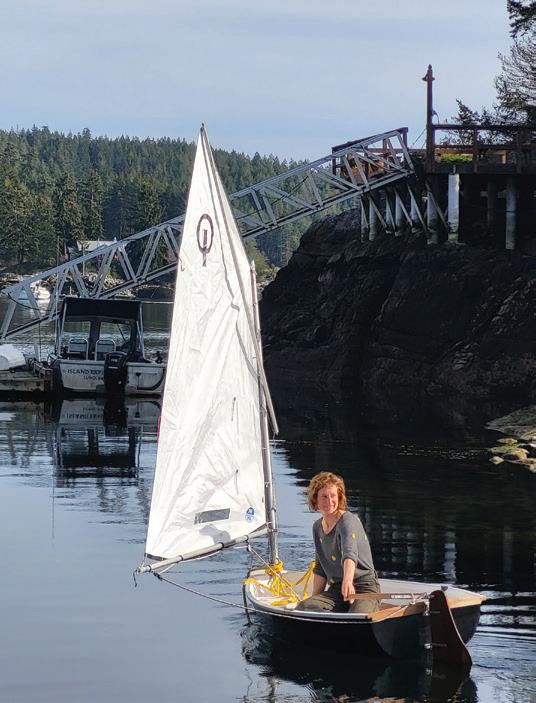
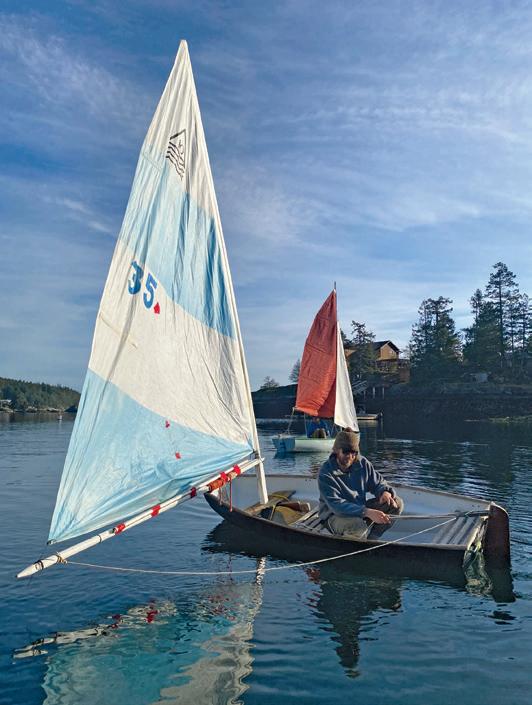
48º NORTH 37 MAY 2024
The author sailing her dinghy in Finn Bay.
The author’s old dinghy became a sailing dinghy on the cheap, with driftwood spars and a free sail.
dock a short distance away. Even in the lightest winds, or when our main boats are in states of disrepair, we can still go sailing together at “No-Class” Friday Night Dinghy Race Club.
One memorable evening last summer, a refreshing breeze beckoned us down the boatyard hill to the dock, where we quickly rigged our dinghies and set an ambitious course for that Friday’s “race.” We sailed farther away from the dock than we ever had before, trying to circle a prawn trap. Then the wind died. We bobbed around for half an hour or so, trying to catch a non-existent breeze, and then trying to catch our friend’s attention as he motored along trolling for salmon, but had no luck on either account. Eventually we started to rock our way home, using kinetics and the gravitational teetering of the mast to generate our own small bursts of wind. It looked like it was going to be a long, tippy trip home, but then one large swoosh of real wind blew past us, and we rode the sudden, isolated gust all the way back to the dock.
Although my new tender is adorable and happily fits on my foredeck, I sometimes find myself missing my old rowboat when I’m out cruising. It was so sturdy and spacious, and those wood rub rails could really take a beating! And I know that our friend had some regrets about the fore-aft running seat he requested to be built for his Sabot. But in the boating world, every vessel is naturally a compromise, and for the time being, I’m very happy with my little dinghy.
After all, a boat owner’s tender sends a message. You sense

that a yachter is rich when their tender is a helicopter; you see that your friend is at his anchored-out ketch when his dinghy is tied astern; and you can guess that Catalina guy is a greenhorn because he tows a canoe. I’d like to think that when people see our dinghies they see a glimpse of who we are and how much we love boats.
Emma Biron lives in Pender Harbour, B.C., and can often be seen sailing her Pearson Triton 28 around the harbor and beyond. In addition to sailing, she loves reading, writing, refits, and rowing.
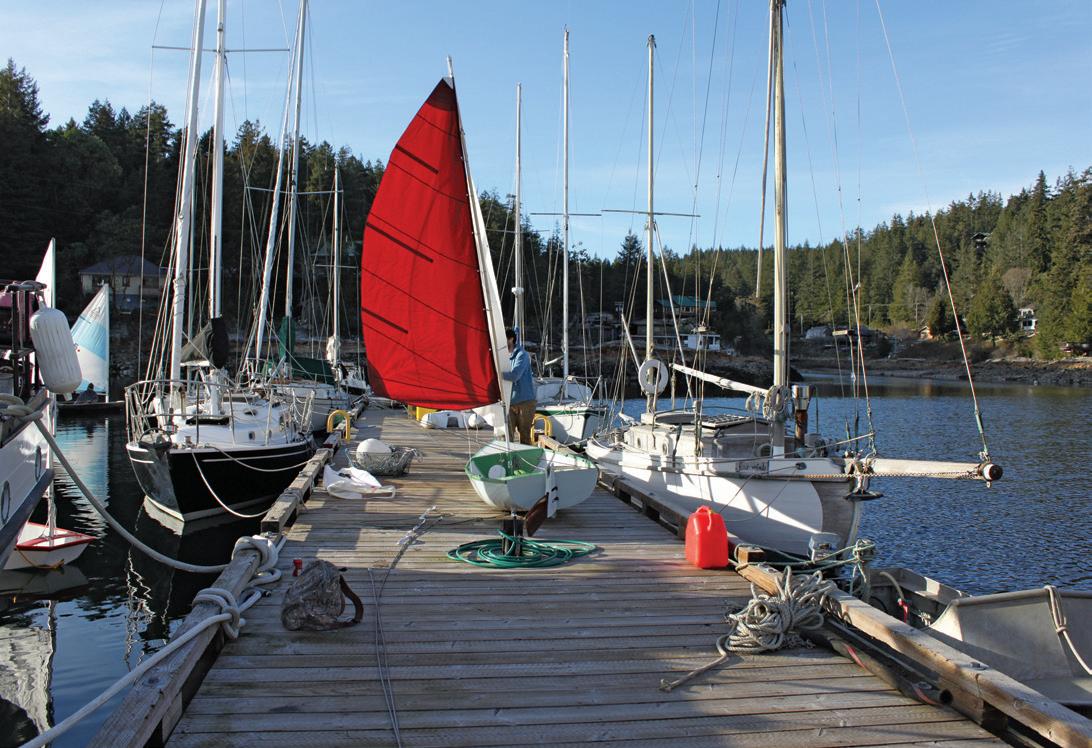
48º NORTH 38 MAY 2024
Sabotoro, the Sabot with an Opti rig.
The new tanbark sail on Trevor’s dinghy matches the tanbark sails on his ketch.
SLOOP TAVERN YACHT CLUB’S

CAROL PEARL BLAKELY ROCK BENEFIT RACE
by Sara Billey
It was an amazing day to be out sailing on Puget Sound for the annual Carol Pearl Blakely Rock Benefit Race. The wind was a steady 10 to 14 knots from the north, which determined the course would bring the fleet of 71 boats from Shilshole Bay north to Meadow Point, southwest across Puget Sound to Blakely Rock, and back to Shilshole.
The J/105 class had nine boats on the line: Avalanche, Corvo, El Gato, Insubordination, Moonglow, Moose Unknown, Panic, Peer Gynt, and Puff. We had an all-clear start with the pin favored on a very long start line. Moose won the pin and we found a good spot about one-quarter to the pin on Peer Gynt (PG), with Insub and Panic setup to our right and Moonglow and Puff just below. The wind looked a bit better outside, but the previous starts had taken more of a middle road to Meadow Point and looked a bit lifted on port.
Corvo tacked first, then Insub and Panic tacked to clear air, and we loosely covered with Moose staying farther out. Moose was making some gains on the fleet so we took another hitch. Approaching the shallows off the beach, we couldn’t quite make the layline. The need for one more hitch gave us the opportunity to tack on Moose
We rounded first at Meadow Point, but promptly hourglassed the kite with a tight lazy sheet and struggled to clear it as the fleet passed by. Moose took the lead but Panic was threatening them with a big wind shadow. We finally got flying and sailed hot to get some clear air as Corvo, Moonglow, and Gato started making gains. Panic and Moose heated
up too and crossed toward the shipping lanes. We weren’t going to win by sticking there behind, so we tried lots of ups and downs and finally found a good low mode where we crept past Panic and gained back some ground on Moose Some boats made it from Meadow Point all the way to Blakely Rock on starboard while others did a couple jibes, but the wind was nicely aligned with the course for an easy ride.
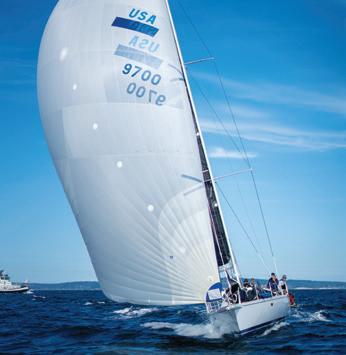
The rounding at the rocks got a bit complicated with traffic. The J/105s had started to catch up with the boats that started earlier and some of the faster boats were catching us. Moose rounded first with our Peer Gynt crew in close pursuit with Libby and Jonathan McKee’s Riptide 44, Dark Star, taking a riskier inside route—putting us in the dreaded “Moose/gold medalist sandwich” with no way out. We waited to clear the shallows north of the rocks and tacked to clear our air. We were recovering comfortably back on port heading toward Discovery Park with moderate breeze building to the right, when along came Moose to tack on
us. Perhaps Moose, too, was affected by Dark Star or they were just looking for an opportunity of their own. Fearing a 5-mile tacking duel, which would cost us time in the overall, we tried to loosely cover Panic and stay a bit farther left. Course right still looked better so eventually we all headed toward Elliott Bay.
The next critical challenge was a barge going about the same speed as us, as well as an inbound container ship on the horizon. The fleet eventually ducked the barge but was in an uncomfortable position with the ship as it turned in toward Elliott Bay. A single long horn signal from the big ship came as it completed its turn.
Everyone rounded West Point with a bit of care as low tide was approaching. Heading back in toward the locks, Moose leebowed us and we tacked to clear and passed just ahead of Gaucho on starboard. Moose made some gains, so we tacked back. The pin was favored on the final approach and everyone seemed to know it. We were trying to stay high enough to avoid the wind shadow of Scheme with the looming fear of being rolled by Maverick at our heels. Moose and Scheme were close at the finish and crossed ahead of us on Peer Gynt. It was a perfect day for the J/105 class and Moose got second in the overall, losing only to Dark Star
Congrats to Moose on the class win, and to everyone who got out there and participated in this great race! This year the proceeds benefited Footloose Disabled Sailing.
Full results at: www.styc.org
48º NORTH 39 MAY 2024
Photos courtesy of Zachary Shane Orion Lough.
Overall winner Dark Star charging through the fleet on the run to Blakely Rock.
SOUTHERN STRAITS RACE 2024
by David Schutte
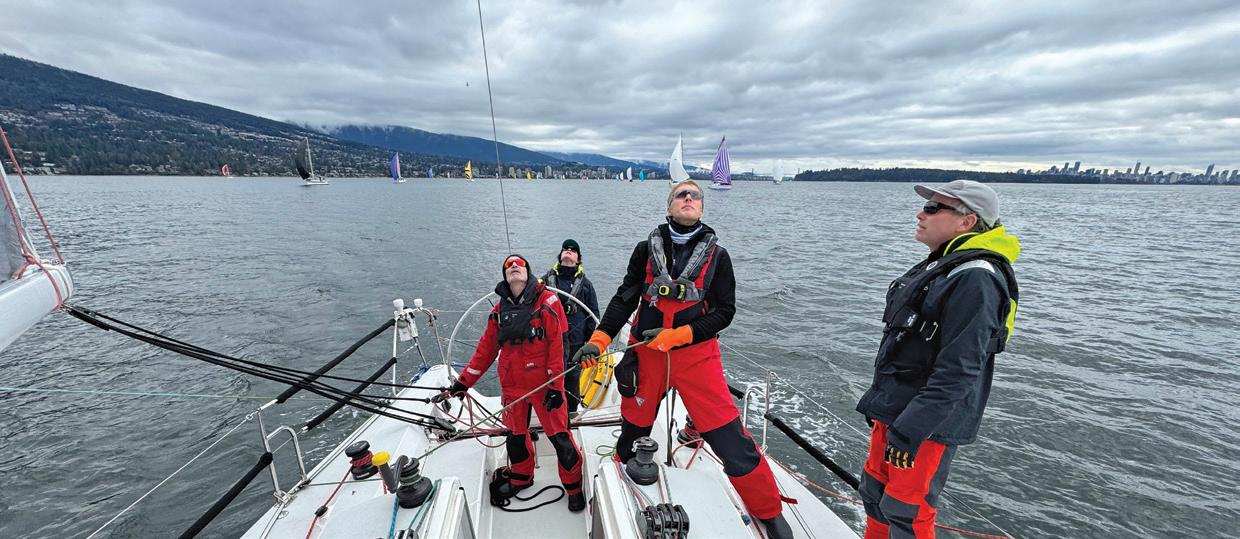
Our team has been sailing in Puget Sound races for the past 14 years.
We learned to race on a J/80 beginning in 2010 and transitioned to Spyhop, a J/109, in 2021. Building experience over the last few seasons with a new-to-us boat, we have been looking for longer races in more open water before someday going offshore.
The Southern Straits Race out of West Vancouver, which crosses the Strait of Georgia, was a natural step in our progression, one that none of our crew had ever participated in. Between the new racecourse and three competitive Vancouver-based J/109s signed up, we couldn’t resist.
Especially after a very windy start to the racing season—including the epic CYC Possession Point race and its once-in-a-generation 50-knot squall— we used the delivery to practice hoisting the storm sails to make sure we knew
how they were rigged. The infamous storm that rocked the 2010 Southern Straits Race weighed on my mind as well. Appreciating how the sea state can build in the Strait of Georgia, I decided if the wind forecast was over 30 knots, we would sit this one out. Thankfully, as the race day forecast settled, the weather models were unanimous that conditions would be moderate, and it was looking to be a fun race.
We spent the night in Blaine, motorsailing the 40-mile semicircle around the Roberts Bank delta and back east into Vancouver to check in at the customs dock. Seeing Vancouver from the water for the first time, bordered by ski slopes and rainbows, was its own reward for the delivery trip. Once checked in, we headed to West Vancouver Yacht Club, where we were greeted with a slip assignment and a drink at the yacht club bar.
With the boat prepared to meet

the Offshore Racing Requirements, provisions stocked and stowed, crew positions and rest-shifts refined, there was time to think about the racecourse and tactical strategies. The yacht club hosted a buffet dinner followed by a weather briefing from Bruce Hedrick, who gave us some tips on what to expect.
The marks of the Southern Straits courses always vary, giving racers a new experience. This year, the middle distance course Spyhop would sail took the fleet 50 miles west to the far side of Lasqueti Island, then back east between the mainland and a rock known as the White Islets, before continuing to the finish in Vancouver. By our reading, tidal models didn’t show any predictable advantages. The wind was forecast to start from astern out of the east-northeast at 5 to 10 knots and build to 10 to 15 knots for the first 12 hours of the race before a convergence and a shift to the west-

48º NORTH 40 MAY 2024
After more than a decade as a team, the J/109 Spyhop crew were all sailing their first Southern Straits Race. Photo by Robert Torok.
A dawn spinnaker run to the finish allowed Spyhop to gain ground on the other J/109s. Photo by Dennis Lussier.
Photo by Dennis Lussier.

northwest overnight. The game plan for the first leg was simple: get as far west as we could before the wind switched. Having never raced at night, it was hard to strategize for the return leg other than hoping to keep track of other boats and make the best use of the wind (the forecast for which was promising across the course).
The start was exciting with 29 boats sharing the line and simultaneously hoisting spinnakers and heading out into the strait. After an hour or two, the boats farther south in the center of the strait had made gains in better pressure. One of the local J/109s was already 2 miles ahead. The other J/109s had jibed to the north, and we picked the middle road, trailing but in touch. Eventually, our middle road course allowed us to catch up to the other J/109s as the wind clocked west-northwest earlier than expected, and we found ourselves in good pressure and favorable current.
By the time we were off the southeast side of Lasqueti Island, we were crossing tacks with the three J/109s nearby and happy to still have good wind as the sun was dropping on the horizon. Hopes were high that this wind pressure would hold through the night as forecast, allowing us to entertain the prospect of a hot breakfast ashore. Instead, the breeze evaporated around sunset as we approached the turnaround point.
A wind shadow developed around us off the coast of Lasqueti. The boats ahead sailed deliberately south toward Qualicum Beach almost 90 degrees away from the rhumb line. We did not follow the fleet, trying a more direct course along the lee of Lasqueti. We kept getting lured east by short-lived puffs that seemed to help us make progress toward the next mark. But after an hour barely moving in
the mostly still air of the dark night, I was forced to admit that cutting the corner was not going to work, as the fleet was now 5 miles south of us with more speed. We accepted our fate, altering course to the south to sail the Great Circle Route as the moon rose in the early morning.
With the early dawn sun, the wind pressure built into a nice 8 to 12 knots. Once around the White Islets and its stingingly fragrant sea lion colony, we had an enjoyable jibe-filled spinnaker run back toward Vancouver. Playing a fine line between sailing a direct course and reaching out into the strait for more wind pressure, we made up some of the time we had lost overnight.
Then there was only 1 mile to go, with a big wind hole all around the finish line. Poking the boat into the wind hole and literally backing out as the current took over, we had a feeling of déjà vu, this time recognizing more readily the necessity of the Great Circle Route, a 3-mile version in this case tripling the distance to the finish that looked so nearby. In the end, the Spyhop crew completed our firstever Southern Straits Race, finishing the 99-mile medium course in just under 26 hours and crossing the line as the third of the four J/109s. We ended up winning our class (we were racing under PHRF and the other 109s used ORC), which was a pleasant surprise!
Reliving the race that evening over dinner, the experience of this race reverberated with ever more appreciation for the beautiful scenery, challenging subtleties of the local conditions, and the rich history of the race that marks the start of distance racing for the year in Canada. I was more satisfied and inspired by the experience than I expected to be, and am already looking forward to a new experience of Southern Straits next year.
Full results at: www.wvyc.ca/on-the-water/racing/southern-straits








48º NORTH 41 MAY 2024
June 15/16, 2024
by: l All J Boats Welcome l Shilshole Bay Marina, Seattle
Presented
The scenery of Southern Straits is always striking. This was the exciting start out of Vancouver. Photo by Robert Torok.
THE RED RUBY PROJECT
AN ADVENTURE IN DOUBLEHANDED RACING BY TWO PNW TEAMS SHARING ONE BOAT

SPI OUEST REGATTA 2024
by Jonathan McKee

Spi Ouest is the largest annual regatta in France. This year, there were 405 boats and over 2,000 (mostly French) sailors. It is an amazing spectacle, with seven racing areas and lots of different classes. On our Jeanneau Sunfast 3300, Red Ruby, we raced in the IRC Double class, which consisted of 28 offshore capable boats of many designs from 26 to 41 feet. It is one of the most competitive regattas for doublehanded short coastal racing in France. The races usually start with a short upwind, then random legs from 1 to 9 miles around the rocky but beautiful Baie de Quiberon, resulting in 20 to 40 mile races with lots of corners. My doublehanded partner Alyosha Strum-Palerm and I raced this event on Red Ruby last year. We sailed well and learned a lot, but we were OCS in one race—in a no-drop series—so our result was not what we hoped for. This year we wanted to do better, which we did! But the result was still not what we wanted.
A program like Red Ruby Racing requires a lot of logistics and management of thousands of details large and small. It takes a village. In this case, we had to get the boat from Malta in the eastern Mediterranean, to La Trinité-sur-Mer in Brittany. We also made some modifications and upgrades to our boat during the winter. After boatyards, delivery crews, shipping companies, marinas, and port authorities, we arrived in La La Trinité-surMer to find our trusty steed patiently waiting for us, tugging at her dock lines in the ever-present Breton current.
Alyosha and I had not raced together since July, so we were anxious to get on the water for sea trials and crew training. However, we arrived in Brittany in the midst of a series of lows and frontal passages, resulting in gale force winds for two of our three potential practice days. Not ideal, but nevertheless we felt pretty ready when race day dawned. With 20 to 30 knots forecast, we used the J3 headsail for the first upwind We had a decent start but got pinched off by a J/99. We tacked right, which turned out well and we rounded the first mark in the lead. “This is going really well!” we thought.
After a good Code Zero reach, we struggled a bit for pace in the next long upwind, but we nonetheless rounded third, with a run followed by a short reach to the finish. We had a good set but our first jibe went horribly awry, with the kite wrapped around the jib halyard and headstay around 50 times. We finally got it sorted out, but it cost us a couple minutes and at least three places, as we ended up sixth on corrected time. Not horrible, but a disappointment after sailing most of the race really well.
The next day was a little lighter, 16 to 22 knots, so we went with the bigger J2 jib. In race two, we had a good start but got rolled by a J/120, then struggled to find clean lanes for the rest of the upwind, rounding the top mark in tenth. We got right to work on the next 5-mile reach, using the Code Zero to pass six boats in our class. Then it was a long windy beat across a tricky
48º NORTH 42 MAY 2024
Image courtesy of Spi Ouest France.
Alyosha and Jonathan have sailed Red Ruby at two consecutive Spi Ouest Regattas.
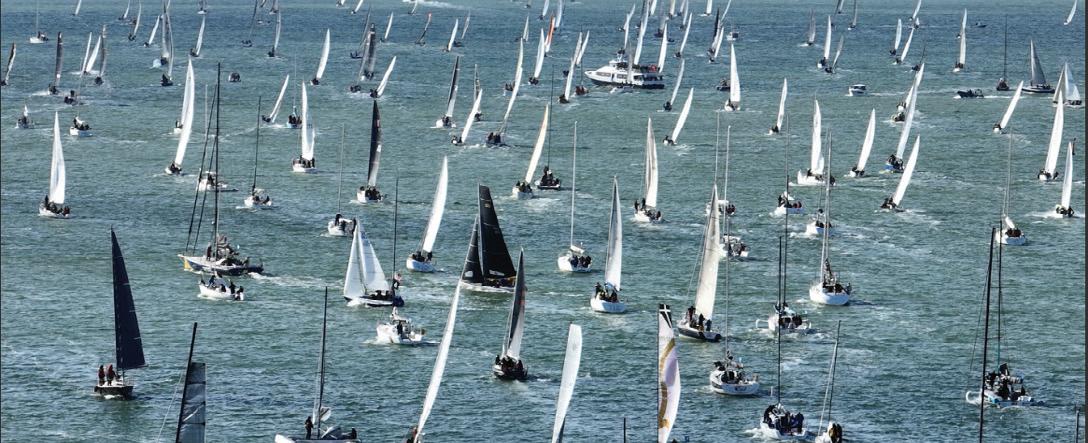
current stream to a small island called La Vielle. Our tactics seemed ok but we got passed by some boats that went more south, so again it was catch up time! We had a little snag with the furler unit, but once we unrolled the big Code Zero we passed three boats again, and another on the next run. From there, it was two jib reaches to the finish at the harbor mouth. We held our position to cross the line in fourth, and corrected to fifth. Not bad. Hard fought.
Race three was an epic and dramatic one, with a frontal passage right during the start. The 15 to 20 knot easterly went south then finally west-southwest. Again, we started well at the favored end and were the first boat to set a flying sail as the leg broadened. We were second after a long reach, then third at the next island rounding as the bigger boats passed us upwind. A local JPK 1030 was gaining but we kept it close. We rounded just behind them with a 3-mile run to the finish, did a better set, and pulled even. But our asymmetrical kite was no match for their symmetrical spinnaker for the 15 knot run, and they ended up putting their time on us by the finish. We scored fourth, so with a 6,5,4 we were in fifth place with one race to go. Respectable.
The final race was both very cool and intensely frustrating, which sort of describes sailboat racing, doesn’t it? As with every other day, it was raining, cold, and squally on the sail out to the start. The forecast was 16 to 25 with higher gusts in the squalls, and it proved correct. But the wind was lightening and going left in the final minutes before our start, so we opted for the bigger J2. As the fleet set up towards the boat end, it became clear that the pin was favored and a port tack start was in play. We executed well, along with a JPK 1010, crossing the fleet easily and rounding the top mark with a good lead.
For the 5-mile reach to Mabahn Buoy, we quickly set and unfurled the Code Zero and took off. It turns out some of the other courses were also using our same course, so it was a crowded mess at the leeward mark, as scores of boats struggled to get kites down in the building breeze.
The rest of the race was equally hectic. At one point on the long upwind, a squall came in at 32 knots. We eased sails and hoped it was temporary, and soon enough it backed off to 18 to 25. On the final run to the finish, we were third in our class and gaining on second, as our bow-up configuration was finally paying off. During this time, the VHF was constantly chattering
away in French, a language that is beautiful but mostly foreign to us. It was clear something was going on with the course or the finish. We nailed our jibe and were ripping into the finish, about to cap off a great week with a top score, probably second. But then there was a surreal moment as we closed on the line. There were actually two finish lines! Which one to pick? We ended up choosing the port one, as the other boats around us were finishing there. Later we found out we had finished incorrectly, and were scored DNF. So instead of being fourth overall we dropped to 11th. Same score as last year!
It was certainly disappointing to not get the score we felt we had earned, but on the other hand our other goals were well met during the week. Compared to last year, we were much better at starting and our tactics and communication were also more consistent. Our boat handling was very good, among the best in the fleet, except for our one spinnaker wrap. We got faster upwind as the week went on through a series of small improvements. So we actually felt really good about how we sailed and how much we learned. It is challenging to acknowledge that, and still account for what the results say, but sometimes you have to just accept that stuff happens in sailboat racing, even when you prepare well, and the scoreline is not the only measure of how you are really doing.
The next chapter for Red Ruby Racing is the most ambitious yet. Our boat partners Christina and Justin Wolfe are racing in the Cap Martinique Race, a 3,800 mile marathon from France to the Caribbean for solo and doublehanded boats. The routing shows between 18 and 24 days at sea! This will be absolutely epic and a true test of human and ship. Send good vibes to Chris and Justin, and follow along on Facebook at Red Ruby Racing. After Cap Martinique, the boat gets shipped back to France; and in July, Alyosha and I take on the next chapter, a series of three doublehanded races of 160 to 600 miles. Stay tuned as our quest for excellence in shorthanded ocean racing continues!
Thanks a lot to all of our fans and supporters! It is meaningful to know you are out there with us, sharing in our adventure. Thanks also to all the people that help us move Red Ruby around and keep her in top nick. We have developed a small group of trusted professionals around Europe and we couldn’t do it without you all. Of course we couldn’t go racing without competitors, and in the doublehanded world, the bonds are especially tight, and the respect is genuine.
48º NORTH 43 MAY 2024
Spi Ouest is the biggest regatta in France. With 405 boats and more than 2,000 sailors, it's quite a spectacle. Photo by Thierre Creux courtesy of Spi Ouest France.
CYC SEATTLE’S PUGET SOUND SPRING REGATTA
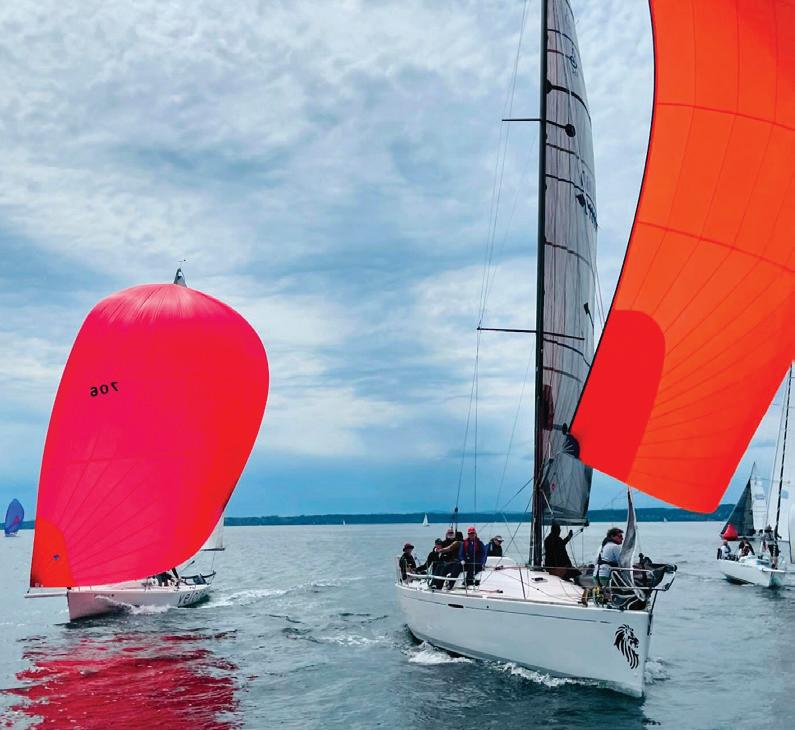
SMALL AND BIG BOAT WEEKENDS
Corinthian Yacht Club of Seattle’s Puget Sound Spring Regatta (PSSR) is the annual kick off of the buoy racing regatta season in the Central Sound. As in recent years, the 2024 event spanned two weekends—the first focusing on smaller boats (Optimists, Aeros, Tasars, ILCAs, J/24s, and J/70s) and the second one spanning a wide array of mostly larger boats (J/105s and VXOnes racing one design, as well as multiple classes racing under either ORC or PHRF handicap systems).

The small boat weekend had a solid turnout and great sailors across all classes in conditions described as “puffy and choppy” by friend of the magazine and new J/70 owner, Lek Dimarucot. It was Lek’s first weekend in the ever-growing J/70 class, which drew 17 boats to the start line from Hood River, Bellingham, Port Madison, Orcas Island, and Lake Washington—the largest J/70 start in the PNW to date. The conditions gave the J/70 sailors some solid planing sleigh rides as well as opportunities to work on
their wing-on-wing spinnaker technique. Winning the J/70 class for the weekend was Boris Luchterhand from Orcas Island sailing his boat Riff, who J/Pod Coach Ron Rosenberg pointed out only began racing in 2020!
Around the small boat fleet, class wins went to Jack Shen in the ILCA, William Taylor and Paul Bogataj’s Atom Ant in the J/24s (who are readying for the World Championship in Seattle this September), Esme Klinemeier in the Optimist, Dan Falk in the RS Aero, and the World Championship winning pair of Jonathan and Libby Mckee in the Tasar.
The big boat weekend threw an even wider variety of conditions at the fleet two weeks after the small boats had their fun. They saw everything from breezeless convergences to a 30-knot blast, and Saturday brought a transition between those two extremes in only two hours. The capable CYC Race Committee had to work hard to get two races in for every fleet for the whole weekend, only one ORC fleet was able to score three races (though just four of nine boats finished that race).
Winning class honors around the big boat fleet were Moose Unknown in the J/105 fleet, Isabella Gillard and Sam Tremblay in the VXone fleet, TP52 Mist in ORC A, 1D35 Shrek in ORC B, Farr 30 Nefarious in PHRF A, Sierra 26 Dos in PHRF B, and J/80 Veloce in PHRF C.
With so many boats in so many classes in such a wide range of conditions, PSSR 2024 provided classic PNW springtime racing to the hundreds of participating racers. Enthusiasm is sure to stay high as the season heats up!
Full Results at: www.cycseattle.org
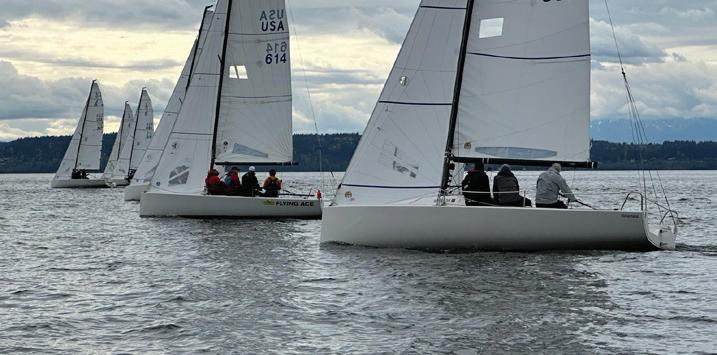
48º NORTH 44 MAY 2024
TP 52 Smoke in good trim before a dramatic sky. Photo by Erin Noelle Parker, who was sailing on ORC A winner, TP 52 Mist.
Seventeen J/70s lined up during PSSR Small Boats. The biggest PNW race fleet to date. Photo by Ron Rosenberg.
Photo by Erin Noelle Parker.

Three Long Courses for Monohulls and Multihulls
• Swiftsure Lightship Classic, PHRF NW
• Cape Flattery, PHRF NW & ORC
• Juan de Fuca, Monohull & Multihull, PHRF NW
Inshore Courses for Racing and Cruising
• Inshore Courses, PHRF BC
REGISTRATION OPENS
Friday March 1st, 2024 • swiftsure.org/ registration
48º NORTH 45 MAY 2024 Official Sailmaker of the Swiftsure International Yacht Race
swiftsure.org #swiftsure MAY
I NTER NATI ONAL YACHT R ACE SWIF TSURE 2024 MARINE TR TAC RECREATIONAL COMMERCIAL INDUSTRIAL MARINE INSURANCE BROKERS presents Royal Victoria Yacht Club C
Photo by Wendi Donaldson Laird
25–26, 2024
PULLEY POINT 2024
 by Stephanie Campbell
by Stephanie Campbell
The honest truth is that deep down in my old school sailing heart, I really fondly remember the days of racing to Pulley Point and was super excited that CYC Seattle was rolling back to the original Center Sound Series races. I was ready to go, and ready to stick it out. The other honest truth is that while the Pyramid 30 Scheme is a boat and crew that stick it out, there was also a legitimate discussion about going to brunch at Hattie’s Hat when it was calm and raining at 9 a.m. before the race. In fact, neither of those options happened. We did the perfectly reasonable option, and raced to Duwamish Head instead!
As we motored out to the starting area on March 23, the “B” on the course board was a welcome sight that we were likely going to finish and didn’t need the extra 3 gallons of fuel after all. “B” was the indication that we were sailing the short course.
The light northerly gave us hope that the predicted afternoon breeze had arrived earlier than expected. We were full of optimism… and chocolate brownies. And since we were on a little boat, also full of cold beverages!
It was a downwind start, and the pin end was favored since it gave the opportunity to jibe away and catch the outflow from the Ballard Locks. Plus, it was just farther downwind and still in the breeze—a solid plan. Scheme started in the second division, and the wily little boat sailors in the first division confirmed our plan. Sailing too far to the left got a little light, and sailing too deep was deadly, but there was a sweet spot where you could keep the boat moving and jibe towards West Point in some wind while still catching some good current that swept you in the right direction.
After West Point, the Magnolia shore was occasionally brilliant, but more of a gamble than we were willing to take. Also, the boats in the first start had already claimed that
territory. Sometimes it seemed like a straight shot to Duwamish Head at a great angle, until you got lifted up into Elliott Bay and got the slows. The Hobie 33 TC was slipping right along with their A-kite, sailing higher angles and staying in breeze. Evelyn 32 Ratfish was keeping pace, as well as Madame Pele, Jolly Green and Charlotte in our little pack. We held together all the way down the run. On the approach to the mark, the J/105s were closing in on us and the biggie boats were burning through the fleets zeroing in, but the only boat that arrived at Duwamish Head with the little boats was large and white with a big green stripe, but was thankfully not blowing any horns. Whew!
On Scheme, our plan was to tack right away after rounding the mark, to stay in the breeze and out of Elliott Bay. That plan might have gone awry with a wall of kites that materialized rather suddenly. We took a clearing tack, and then it was mostly a fetch back to West Point once you flopped back onto starboard.
As often happens as you proceed north, you definitely had to take a tack or two to make it out to the point, and it definitely mattered when you tacked. Boats that took the high road seemed to fare a bit better, but the angle you had to accept to get there was sometimes hard to justify. On our first tack to the beach, we were at a course of 70 degrees; but on our second and more successful tack we were at 38 degrees. After turning well clear of West Point, there was a long port tack that brought us most of the way to the Meadow Point buoy before a last quick run to the finish. That was uneventful for all boats but one—you know who you are!
With an early afternoon finish, the clubhouse was packed. It was loud, fun times! There was chili and Dark and Stormies and sailors and Girl Scout cookies as far as the eye could see.
Thank you to the organizers and volunteers who worked hard to make the whole thing happen. This was the most fun Center Sound Series I’ve been to in quite a while! Congratulations go out to division winners of the day. Collecting the Girl Scout cookies were: Ace in ORC 6, Manifest in ORC 7, and Glory in ORC 8 and Overall; the J/27 LXIII in PHRF 1, TC in PHRF 2, Moose Unknown in the J/105 fleet, Shada in PHRF 4, and War Canoe in PHRF 5. After three great races in the Center Sound Series 2024, overall series honors went to Ace in ORC, and Rush in PHRF. Well sailed!
Full results at: www.cycseattle.org
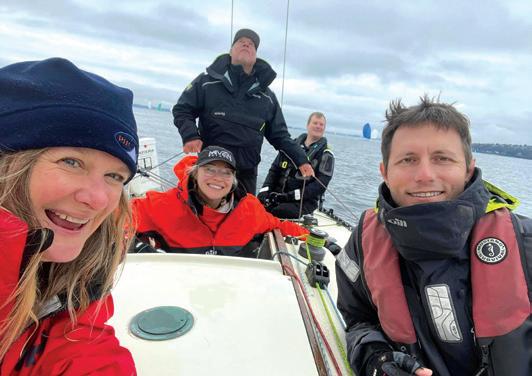
48º NORTH 46 MAY 2024
A happy Scheme crew makes way toward the shortened course mark at Duwamish Head.
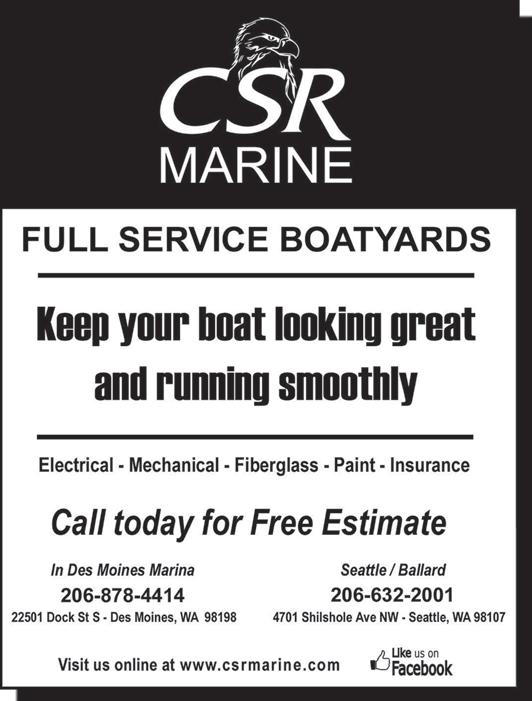





BOATS FOR
$145,000

1970 SOUTHERN OCEAN GALLANT 53
BY VAN DE STADT
The Gallant 53 was designed by naval architect and yacht designer, E.G. Van de Stadt, These Gallants soon gained a reputation for their good looks, bulletproof construction, superb motion in a seaway and as has been proved, the ease with which they can be handled with a minimum crew. Twenty two were built by Southern Ocean Shipyard Ltd and by Tylers in England from 1967 to 1973. For full spec sheet and photos https://drive.google.com/drive/ folders/14sa0a5_bPg11wx0YKH5oqcrFcsSRN1qB » Contact Sv.auntie@gmail.com • $145,000
$72,900

CUSTOM 43’ EDSON SCHOCK KETCH (1973)
Professionally built of mahogany planking over oak frames, Debonair has been lovingly maintained. Extensive upgrades include new electrical and 75hp Yanmar. Consistently turning heads, Debonair is a seaworthy passage-maker, recently completing a 16,000nm tour of the South and North Pacific. From rig to sails, systems to safety, Debonair is voyage-ready. Details: porttownsendboatco.com or www.yachtworld.com/yacht/1973-custom-edsonschock-43'-ketch-8441971/ » Contact Vance Rucker • ketchdebonair@gmail.com • $72,900
$4,499

VENTURE OF NEWPORT 23
Very nice trailerable sailboat. I get constant compliments from people who didn’t know MacGregor made such a handsome, jaunty, and sassy looking model. All exterior wood is teak. About the lightest towing weight of any boat this capacious. Good condition. Sunbrella covered cushions. Everything works. Great galvanized roller trailer. Boat can be sold separately. See specs and many photos online. » Contact Richard Dodge • (206) 954-7208 (Send text) • dodgerichard027@gmail.com • $4,499
48º NORTH 47 MAY 2024 CLASSIFIEDS
SALE
SALE
FOR SALE
BOATS FOR
BOATS
$25,000

33 FOOT C & C
Well equipped C&C 33 foot MK11 with trailer. Minor repairs needed. Worth $35,000, asking $25,000. Will consider reasonable offers. » Contact Jan Martin • (406) 459-3339 • jomvallymt@gmail.com • $25,000
$89,000
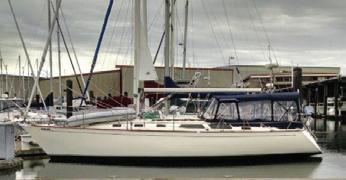
SABRE 38 MK 2 1988
800 hours on vetus diesel, Balmar alternator, ars-5 regulator, solar panels, galvanic isolator, aquadrive, pyi prop, dripless shaft seal, furling main with electric winch, 200’ chain, cqr anchor, spare Bruce anchor with 50’ chain, AB dingy, 10hp 4 stroke mercury, needs nothing just new owner. » Contact Tom Stanton • trilogysail@protonmail.com • $89,000
$25,000

1994 26’ LYLE HESS GAFF RIG CUTTER
Traditional construction, plank on frame, Red CedarMahogany, galvanized fasteners solidly built. Built at NWSWBB and launched in Port Townsend. Reefing bowsprit, Yanmar 2GMF diesel, VHF Radio, Propane 2 burner cook stove, wood stove for heating (SARDINE). In sail ready condition to enjoy sailing traditionally in NW and Canadian waters! » Contact Andy • (360) 202-8031 • niyahsea@hotmail.com
$259,500
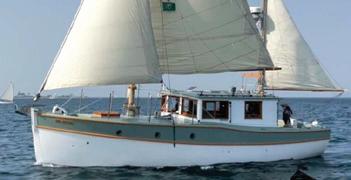
CUSTOM 2008 GAFF KETCH MOTORSAILER
Head turning. Seakindly. Spacious. AK vet. Maintained. 6.75 kts. Efficient .67 gph. 160 gal fuel. New 12" Garmin electronics. Autopilot. In/Out helms. Sleeps 6. Pilothouse. Salon. Fireplace. AirHead. Solar. Spares. Bronze fastened. NWSWB built. OR white oak. Purple heart. Mahogany hull & in. 24" MaxProp. Easy maintenance w/covers. AchillesRIB. Oly slip. » Contact Capt. Peter Wilcox • (503) 490-5407 • peter@decarbthepassage.net • $259,500 OBO
$11,750

SAN JUAN 28
An inboard Yanmar 2QM15, 2-cylinder diesel engine, diesel fueled cabin heater, Bottom pressure washed and recoated with antifouling paint in April 2024. 6' 2" headroom in cabin. » Contact Michael Farley
• (253) 325-8007 • habitatsafetyguy@gmail.com • $11,750
$115,000

PASSPORT 40 1983
World Capable Cruiser. Ready to take you cruising. Beautiful yacht. Cutter rigged with oversized rigging and extra cockpit winches. Lots of newer equipment; 40 hp Yanmar engine, autopilot, radar, stove/oven, watermaker. Cruise equipped; large sail inventory, windvane, heater, fridge/freezer. 2018, engine and power train refurbished at $20K cost. Orcas Island, WA. » Contact Tom Owens • (360) 632-8896
• svlandsend@yahoo.com • $115,000
$70,000

CABO RICO 38
Excellent boat for a couple to cruise. We have cruised her over 10,000 miles, and her previous owner sailed her to the South Pacific (Australia) and back. She has been well maintained over all that time. Easy to sail, comfortable, and safe boat to cruise. World class designed and built to the highest standards.
» Contact George P Leonnig • 1(503) 707-6062 • moctobi@gmail.com • $70,000
$18,900

1978 PACIFIC SEACRAFT 25-2
Sailboat with excellent trailer and tremendous amount of gear ready for someone handy to put it all together. Yanmar 2YM15 with 1.5 hours on it, two furlers, 6 sails, cockpit and interior cushions, two anchors, wind vane self steering and Raymarine tiller pilot, Furuno radar, propane system parts. Too many parts to list – contact me for link to photos » Contact Todd Chandler • (541) 992-9289
• todd@chandlermarineservices.com • $18,900
$20,000

1994 CATALINA 270
Perkins 18 HP Diesel, Pedestal Steering, 100 & 130 jibs, tri sail and main, dodger, wheel and sail cover, and winged Keel. » Contact Mark • 206-784-4474 • mjquam2@q.com • $20,000
$15,000

1977 MERCATOR OFFSHORE 30
Sound minimalistic vessel for single or two comfortably. A great learning vessel. Original economic 18hp Sabb engine with feathering prop. She’s taken her skipper north to Juneau over the last decade inside and out at times. Must see to appreciate:Heater,Propane stove.Jabasco head.Foot pumped H2O. Roller furled jib. At Tacoma Foss Harbor Marina. Owner has health issues & is motivated. » Contact Frederick L Pabst • (253) 226-0212 • blueribbonfarm@tx3.net • $15,000
$24,000

25' JIM BROWN SEARUNNER TRIMARAN 2017
Ready for the next voyage. Fully restored in 2017 Searunner 25 Cutter. Has been freshwater kept its entire life. Epoxy over plywood. For tons of photos and details about this boat visit searunner25.com. This boat is designed to fold for transport on a seasonal basis – folding/unfolding takes a few hours. Email me to set up a video tour. » Contact Dan • nibiru@searunner25.com • $24,000
$52,000

36’ ROUGHWATER CRUISER 1981
Cruise 8k, plane to 15k. Fiberglass hull. 6cyl turbo diesel, 3500 hrs. New Raymarine chart plotter. Radar, AIS, 3000w inverter. Maxwell electric windless, 200’ chain. Solar panels. Tecma electric toilet, 35 gal holding tank, 200 gal diesel, Propane stove and Cozy Cabin heater. Reefer/ freezer. Recent Survey. Located in Pleasant Harbor WA. » Contact Brad • (360) 774-0912
• carreirasuzanne@yahoo.com • $52,000
48º NORTH 48 MAY 2024
BOATS FOR SALE BOATS FOR SALE BOATS FOR SALE
BOATS FOR SALE EXCURSIONS
$16,000
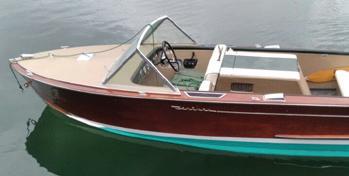
1966 CENTURY RESORTER 17
Mahogany inboard. New varnish & bottom paint. Newish 383 (500hp). 50 mph. New upholstery. New cockpit sole. New fuel tank. New gauges. Rebuilt transom. New king Trailer. Ski tow-post. Nearly new custom cover. 5200 bottom w/glass-epoxy over. Custom teak swim step. Serious inquiries only. Bainbridge Island.
» Contact Jim Llewellyn • (206) 842-4552 • jim. llewellyn47@gmail.com • $16,000
$2,500

9 FOOT HYPALON RIB
West Marine Hypalon 9 ft RIB (310) purchased summer of 2022 and used for only half of a season. Paid $3700 two years ago. This dinghy is ideal as a tender. Can deliver to western WA. » Contact James Y Lea • jyleamd@msn.com • $2,500 OBO

BEYOND THE END OF THE WORLD
ALASKA DELIVERY SKIPPER
Experienced Alaska skipper available for yacht delivery between Puget Sound and SE Alaska or return. Expenses only if timing is right. » Contact Victor Stevens • (503) 901-7814 • captvic4@gmail.com
Great location for access to San Juans and Gulf Islands at Semiahmoo Marina a best class marina. Slip C-18 is close to main dock and bathhouse with bow in starboard tie and allows 46’ maximum overall with 14.3’ beam. More info at: https://semiahmoomarina.com/ classifieds/c-18-44-is-fresh-on-the-market-115000/ » Contact John Cavanaugh • (360) 672-2760 • johncavanaugh@boatsafloat2.com • $105,000
» Contact Vladimir Chepurnoi (Captain, ASA Instructor) • (425) 365-7890 • vlad@pnwsail.co • $3,500 $3,500
Explore the Land of Fire and Antarctic with Pacific NW Sailing! Join our 2024-2025 sailing expeditions on ice-class sailboats: Chile Patagonia Fiords (12 days), Cape Horn and Patagonia Fiords (12 days), Antarctic (16-21 days). ASA sailing courses available during expeditions. For detailed information, text or email at info@PNWSail.co
INSTRUCTION



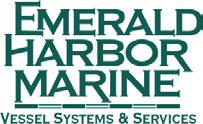

through Advanced Sailing Lessons Week-long Cruise & Learn lessons Spinnaker, Intro and Advance Racing Classes Gill foulweather gear & Dubarry
Call the Marina Manager for availability and waitlist options: 360-779-7762 American Sailing Association courses Basic Keelboat 101 through Advanced Coastal 206 Based in Beautiful Anacortes, WA www.sailtime.com/anacortes/sailing-school info@seattleyachts.com
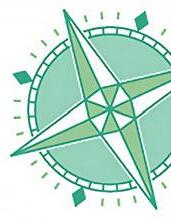

VIKING 6 MAN LIFE RAFT
Viking RescYou Ocean Liferaft, Model L0008U007, 8 person, retail $3349.95. Never opened. Will need new service date. Email me for specifications.
Contact Robert Hepple • 1(360) 306-0953
a64me@yahoo.com
$1,200
48º NORTH 49 MAY 2024
Basic
206-782-5100 www.seattlesailing.com info@seattlesailing.com 7001 Seaview Ave NW Suite 130 (Shilshole Bay Marina in Port of Seattle Building) MOORAGE LIBERTY BAY MARINA 40’
slips. Great
in Poulsbo, WA
Showers.
footwear
– 48’ – 60’
location
Restrooms,
No ocean too big, no trip too small, no ship too large, no mast too tall, sail or power, we move them all!!! When you are ready, give us a call. Professional service since 1967. CappyTom@aol.com • (206) 390- 1596 PROFESSIONAL SERVICES Full service rig shop serving Puget Sound www.evergreenrigging.com Cliff Hennen (360) 207-5016 • (206) 718-5582 The Systems Specialists www.emharbor.com Please contact us to arrange a visit: 206-285-3632 E-mail: info@emharbor.com Electronics E-mail: larry@emharbor.com Based at Elliott Bay Marina MARINE EQUIPMENT
SEMIAHMOO
360-299-0777 VESSEL MOVING
44 FOOT SLIP FOR SALE
MARINA
•
•
$1,200 SERVICES
»
For
photos and listings check out 48north.com/classifieds
even more

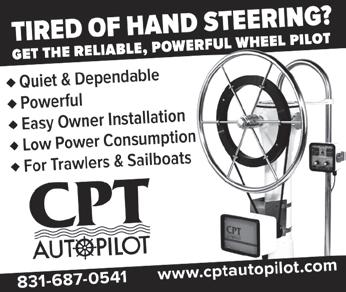






48º NORTH 50 MAY 2024 CLUBS CROSSWORD SOLUTION PLEASE SUPPORT THE ADVERTISERS WHO BRING YOU 48° NORTH ACI/Gold Star Marine 27 Anacortes Race Week ..................................9 Aspen Power Catamarans ..........................8 Ballard Sails & Yacht Repair 47 Beta Marine West 10 Boat US ........................................................ 12 Cape George Marine Works 19 Corinthian Yacht Club Tacoma 27 CSR Marine ................................................. 47 Dockside Realty 27 Downwind Marine 17 Drivelines NW ............................................ 19 Fisheries Supply 4 Friends of the San Juans 19 Gig Harbor Boat Works ............................ 17 Iverson's Design ........................................ 35 J/Fest 41 Marine Service Center 56 Marine Thrift .............................................. 27 Northwest Marine Trade Association 15 Northwest Maritime Center 19, 52 Northwest Rigging .................................... 35 Port of Port Townsend 51 Royal Victoria Yacht Club/Swiftsure Race 45 Sail Northwest ..............................................2 Sailrite ............................................................7 San Juan Sailing 35 Seattle Sailing Club .....................................3 Seattle Yachts ............................................ 54 Seattle Yachts Sailing Academy 11 Seventh Wave Marine 31 Signature Yachts........................................ 55 Swiftsure Yachts 53 Ullman Sails 17 Waterline Boats ......................................... 52 Yachtfinders/ Windseekers 52
EQUIPMENT MARINE EQUIPMENT Basic through Advanced Sailing Lessons Week-long Cruise & Learn lessons Spinnaker, Intro and Advance Racing Classes Gill foulweather gear & Dubarry footwear 206-782-5100 www.seattlesailing.com info@seattlesailing.com 7001 Seaview Ave NW Suite 130 (Shilshole Bay Marina in Port of Seattle Building) Fractional Membership makes boating affordable & easy! Your boat is ready when you are! https://sailtime.com/location/anacortes info@seattleyachts.com 360-299-0777 READYABOUT AB A B EAR N H A DEADAHEAD OAR A F V OUT RATLINES TAB L N T C U I CLIMBS BARBEL A N O K L L TOW ABEAM SOO F AIR T C W IVY DECKHOUSE S O NH E L D HEFTED KRILL 12 345 67 8 910 11 12 13 14 15 16 17 18 19 20 21 22 23 24 25 26 27 28 29 30 31 32 33 34 509.928.1964 Asymetrical drifters & spinnakers Classic Sails (Gaff, Sprit & Lugs) Performance furling & G-SpinnTM Sails Light Air Sails we design & make custom sails in washington state! YAGERSAILS.COM FLYINGSAILS.NET NW Sail and Canvas Makers YAGER SAILS & CANVAS
MARINE
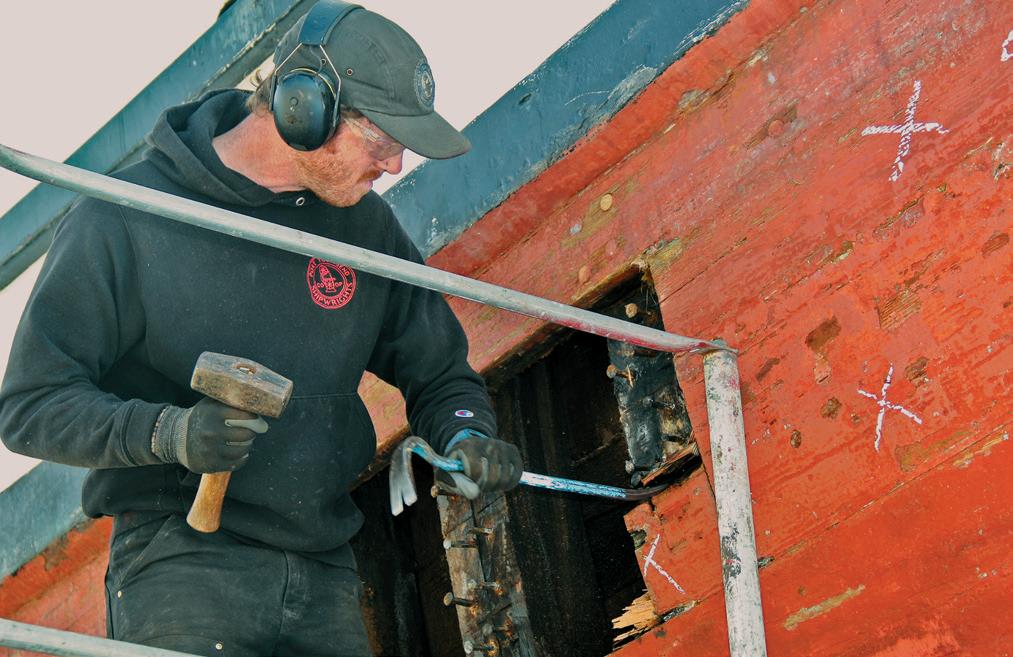


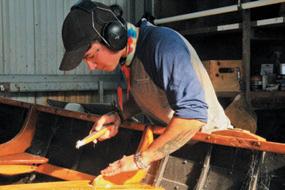


48º NORTH 51 MAY 2024


SYDNEY,BC
(619) 224-2349 • Fax (619) 224-4692 • 2330 Shelter Island Dr. #207 San Diego, CA 92106 www.yachtfinders.biz • info@yachtfinders.biz



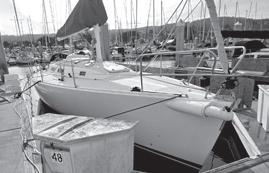
70’ SANTA CRUZ 70 ’87
$379,000
....................
“WESTERLY” Completely updated with no expense spared.An excellent opportunity to obtain a very up-to-date SC 70 and get sailing now.
40’ ISLAND PACKET 40 ’97
$179,500
....................
“PARADISEA” Remarkable attention to detail. She is wellprepared for extended cruising with an extensive list of spares. Truly a must see!
40’ J BOATS J/120 ’99
$108,000
....................
“SUR” Popular racer/cruiser that has mostly cruised and is a Mexico vet. Set up for cruising but would be suitable for club racing.
or email: info@yachtfinders.biz A Leader in Brokerage Sales on the West Coast
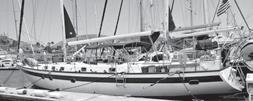
55’ ROBERTS 55 ’97
$169,000
“KOOK” Strong enough for the most demanding conditions, she can take you to the anchorages of your choosing.

44’ KELLY PETERSON KP44 ’79$67,000
“KAREN B” Clean, well-maintained cruising classic with handsome lines from renowned naval architect Doug Peterson.
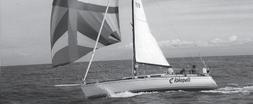
40’ SANTA CRUZ SC40 ’84 $59,000
“KOKOPELLI”An exceptional racer cruiser with many updates and improvements. Some Santa Cruz slip time possible

39’ NAUTOR SWAN 391 ‘84 $79,900
“SAGA” If you’ve been looking for a highperformance sailing yacht with a fine pedigree, here’s your chance.

39’ ERICSON 39 ’71 $79,500
“TRAVELER” Ideal performance cruiser for short-handed sailing. Meticulously upgraded. Nicely finished interior.
or Sail,







48º NORTH 52 MAY 2024 46 - 43E - 43S - 38E - 38S Helmsman trawlers ® WATERLINEBOATS.COM | 206.282.0110 - SEATTLE | 425.278.9846 - EVERETT | 564.218.5201 - PORT TOWNSEND 1993 SEA RAY 440 REDUCED 1985 CHB EUROPA SEDAN 1996 BAYLINER 3388 REDUCED 2007 BAYLINER 325 REDUCED There is storage everywhere!”. “I love the real wood”. “It feels so solid”. “This would be a safe boat for my dogs”. “I can’t believe that this is only a 38 foot boat”. Heard on the docks — from people who’ve toured a Helmsman Trawlers® 38E Pilothouse: Helmsman Trawlers are built to exceptional standards – examine and compare! helmsmantrawlers.com | 206 282 0110 WLB Brokerage - boatshed seattle . boatshed tacoma boatshed everett boatshed porttownsend WATERLINE BOATS WLB homeport for helmsman trawlers View our entire inventory of boats for sale at waterlineboats.com NORTHWEST MARITIME CENTER 431 Water Street Port Townsend, WA 98368 Breathtaking setting, spectacular day! Ceremonies Receptions Rehearsals Contact us today venuerentals@nwmaritime.org THINKING OF SELLING YOUR BOAT? LET US HELP! Power
have buyers
Call: 619.224.2349
we
waiting!
Professionally
Open 6 days, Sun by appt.
staffed!
NEW LISTING NEW LISTING SANTACRUZ REDUCED ENSENADA
MONTEREY
Viking 2005 Tayana 48 $399,000
The Robert Perry-designed Tayana 48 is a perfect blend of expert cruising sailboat design and quality construction. The Tayana 48’s fin keel and skeg-hung rudder provide great sailing performance and she is easily sailed by a shorthanded crew with her electric genoa furling, staysail on fixed furler and Leisure Furl boom with electric main halyard winch. A full cockpit enclosure protects the crew from sun, wind and adverse weather. Viking is well-equipped and blue water ready. All upgrades by the current owner were undertaken with offshore sailing, sail handling and security at anchor in mind. Her equipment and recent upgrades include Leisure Furl in boom furling and electric halyard winch, electric genoa furler, new standing rigging in 2021, bow thruster, Webasto hydronic heat with heated cockpit, recent Raymarine electronics, SSB radio and Iridium GO satellite hotspot, low hours Northern Lights generator, Simpson Lawrence high capacity dinghy davits and a 960 watt solar array.

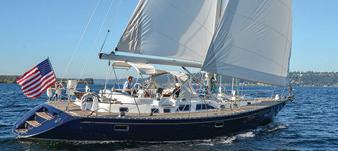


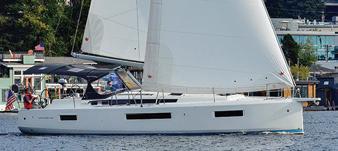



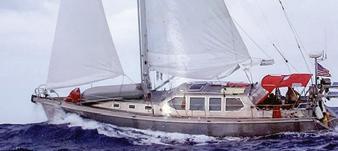

48º NORTH 53 MAY 2024 QUALITY YACHTS FROM SWIFTSUREYACHTS.COM NEW YACHTS FOR WORLD CRUISING SwiftsureYachts www.swiftsureyachts.com 206.378.1110 | info@swiftsureyachts.com 2540 Westlake Ave. N., Ste. A Seattle, WA 98109 facebook.com/swiftsureyachts Seattle & Pacific Northwest San Francisco Bay Rhode Island With brokers on both west and east coasts, Swiftsure Yachts is dedicated to providing premium service to sailors buying or selling quality yachts. swiftsure locations Jeanneau 440 • 2020 • $407,550 Saga 48 • 2003 • $299,000
44 • 1982 •
Lyman-Morse Seguin
$168,000
59 • 1997 • $524,000 Hylas 49 • 2000 • $399,000 Allures 45.9 • 2018 • $629,000 Radford 14 Meter 46 • 2000 • $320,000 Passport 40 • 1984 • $149,000 70 Wylie 1993 $279,000 62 Oyster 625 2014$1,495,000 56 Coastal Craft 2012 $1,750,000 52 Santa Cruz 2001 $349,000 49 Bavaria 2003 $189,000 48 OceanAlexanderAltus 2003 $399,000 47 Beneteau 473 2005 $203,000 46 Hallberg-Rassy 2003 $420,000 45 Allures 45.9 2021 $699,000 45 Freedom 1989 $154,000 44 Elan 45.1 2021 €259,000 44 Gib’Sea 126 1986 $74,500 44 Catalina Morgan 440 2005 $197,000 43 Shannon 1995 $175,000 43 Irwin 1987 $150,000 42 Catalina 42 (MKII) 2007 $185,000 42 Valiant 2008 $275,000 41 Sceptre 1989 $149,000 40 Wauquiez Centurion 1991 $109,500 39 Hallberg-Rassy 2003 Inquire 38 Catalina 1998 $109,000 36 Sabre 362 1996 $135,000 35 Hanse 350 2008 Inquire 35 Shaw Riptide 1996 $145,000 34 Jeanneau 34.2 2001 $79,000 28 Alerion Express 2000 $62,500 28 Cutwater 2013 $149,000 27 Ranger Tug 2018 $149,000 Dudley
43 • 2004 • $375,000 price reduced
Hinckley Sou’wester
Dix


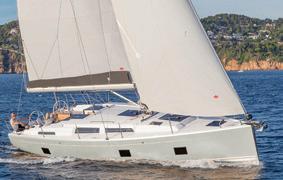
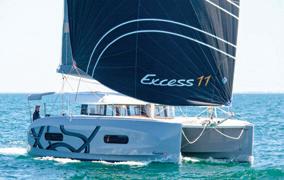

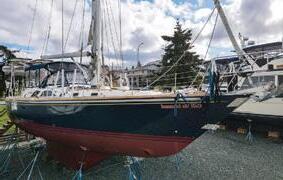







48º NORTH 54 MAY 2024 844.692.2487 SEATTLEYACHTS.COM LIVE THE ADVENTURE SEA BEYOND WASHINGTON • CALIFORNIA • FLORIDA • MARYLAND • CANADA 2022 Tartan 365 #5 - DEMO BOAT Seattle Yachts 844.692.2487 2023 Excess 11 $581,884 Seattle Yachts 844.692.2487 IN-STOCK #70 2007 Hylas 49 $525,000 Greg Farah 360.603.0809 '08 Island Packet 370 $239,000 Jeff Gleckler 360.202.2290 Seattle Yachts 844.692.2487 2008 Beneteau 49 $299,000 Jeff Gleckler 360.202.2290 SELL YOUR BOAT! LIST WITH US! 2023 Hanse 418 $459,597 Seattle Yachts 844.692.2487 2024 Tartan 455 Seattle Yachts 844.692.2487 SUMMER 2024 #02 2022 Hanse 418 - DEMO BOAT Seattle Yachts 844.692.2487 IN-STOCK #304 IN-STOCK #05 IN-STOCK #288


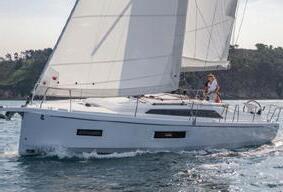
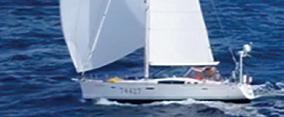
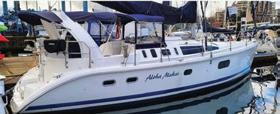

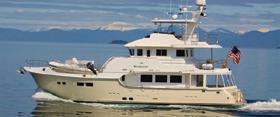









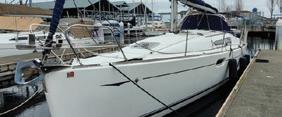

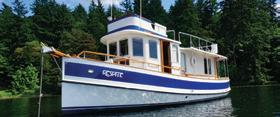




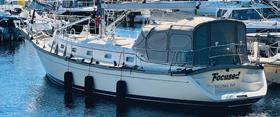
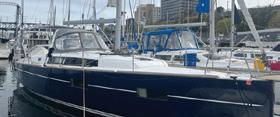
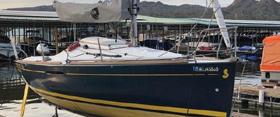
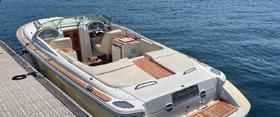
48º NORTH 55 MAY 2024 Pre-owned Boats What's Happening • Boats are Selling FAST! Quality Listings Wanted! Beneteau First 27 SE '23 Arriving Sold Beneteau 34 1 '24 Arriving Sold Beneteau Oceanis 30 1 '23 Arriving Sold Beneteau Oceanis 30 1 '23 Arriving Sold X Shore 1 '24 Arriving Sold Beneteau Oceanis 30 1 '20 SOLD Ranger Tug R-31 S '13 SOLD X Shore 1 '24 SOLD Beneteau Oceanis 38 1 '23 Sale Pending Beneteau 361 '00 Sale Pending 2476 Westlake Ave N. #101, Seattle, WA 98109 • (206) 284-9004 • Open Mon-Sat 10:00am-5:00pm • Sun. by appointment WWW.SIGNATURE-YACHTS.COM 35' Beneteau 350 '88 $45,000 AtOurDocks 38' Globe 38 '83 $114,500 AtOurDocks 38' Beneteau Oceanis 38.1 '21 $299,000 AtOurDocks 21' Beneteau First 20 S '14 $37,500 Arriving 68' Nordhaven 68 '11 $3,600,000 ByAppointment 45' Bayliner 4588 '86 $99,999 ByAppointment 25' Chris Craft Corsair 25 '07 $68,500 Inquire 40' Gozzard Pilgrim 40 '87 $159,900 ByAppointment 47' Beneteau 473 '01 $179,900 AtOurDocks 44' Island Packet 440 '07 $425,000 ByAppointment 46' Beneteau 46.1 '23 $599,000 ByAppointment 49' Beneteau 49 '08 Inquire Arriving 39' Jeanneau Sun Odyssey 39i '07 $154,500 AtOurDocks 40' Beneteau Oceanis 40.1 '23 $415,000 ByAppointment 41' Hunter 410 '98 $110,000 AtOurDocks 38' Beneteau 38 '17 $225,000 ByAppointment X Shore 1 100% Electric X Shore Eelex 8000 100% Electric Beneteau First 27 Fast and Furious Beneteau Oceanis 34.1 Arriving Northwest Debut Beneteau Oceanis 37.1 Beneteau Oceanis 40.1 3:2 and 2:1 in stock Grey Hull Beneteau Oceanis 46.1 Beneteau Oceanis 51.1 3:3 and 3:2 in stock

MARINE





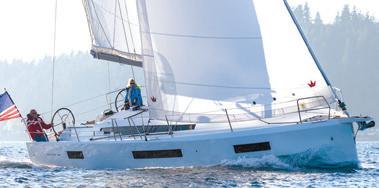



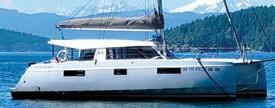

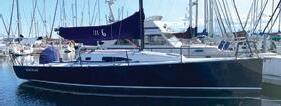

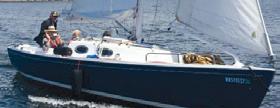

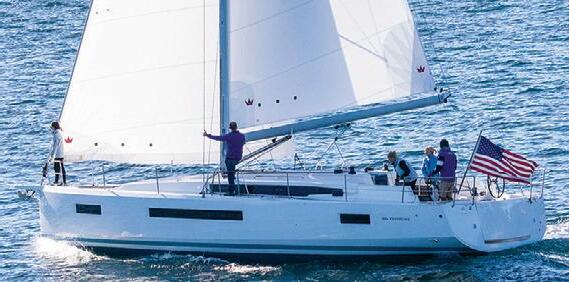








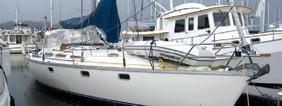



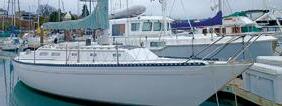





















48º NORTH 56 MAY 2024
2023 Jeanneau 490 #77424: $599,896 Don Smith Dean Iwata Curt Bagley 2024 Lagoon 42 #835: $789,828 2024 XO Defender 9 • $398,784 Dealer of the Year ‘23 • ‘22 • ‘21 • ‘20 • ‘19 • ‘16 2024 Jeanneau 380 #77927: $378,535 2011 Dufour 525 GL • $385,000 2011 J/111 • $249,000 1996 X-Yachts IMX 38 • $55,000 Reduced 1990 Jeanneau Sun Magic 44 • $109,500 LISTINGS WANTED! • WE GET RESULTS ! See Your Boat in 48° North & Five Online ads! 43' Jeanneau 43DS '03 SOLD 41' Jeanneau 410 ‘20 ............................. SOLD 40' Jeanneau 409 ‘13 ............................. SOLD 40' Jeanneau 40DS ‘99 SOLD 38' C&C 115 '06 ...................................... SOLD 38' Catalina 380 '99 .................. Sale Pending 37' Jeanneau SO37 ‘01 SOLD 36' Catalina 36 ‘94 ................................. SOLD 35’ Catalina 350 ‘03 ............................... SOLD 35' Jeanneau 349 ‘20 SOLD 34' Bavaria 34 '01 SOLD 33' Bavaria 33 '06................................... SOLD 33' Nauticat 33 ‘86 ................................. SOLD 32' Catalina 320 ‘00 SOLD 28' Bristol Channel Cutter 28 ..... Sale Pending Dan Krier Jeff Carson John Sheppard Yacht Sales - Since 1977 SAVE $138,379! SAVE $99,839! 2024 Jeanneau 349 Ltd Ed #77925: $259,990 SAVE $26,860! SAVE $16,466! SAVE $21,785! 2024 Catalina 355 #182: $358,746 SAVE $11,560 SAVE $26,402 1979 Morgan 382 • $29,000 1975 Islander 36 • $19,500 Seattle Bellingham Los Angeles San Diego 2442 Westlake Ave. N 1801 Roeder Ave. #128 4655 Admiralty Way, #208 955 Harbor Island Dr., #160 206.323.2405 360.770.0180 310.963.3750 619.733.0559 info@marinesc.com • www.marinesc.com 2024 Jeanneau 440 #77930: $549,684 SAVE $42,909! 2014 Harbor 25 • $44,000 2022 Marshall Catboat 22 • $89,900 1994 Tofinou 23 • $37,000 New Listing 2024 LaMare Modern 11 #442: $329,834 2014 Jeanneau 409 • $214,500 Reduced New Listing 2016 Nautitech 40 • $448,000 New Listing CROSSOVER LA MARE HOUSEBOATS Reduced New Listing Reduced
SERVICENTER


















































































































 by Bruce Bateau
by Bruce Bateau







































 by Joe Cline
by Joe Cline

































 by Stephanie Campbell
by Stephanie Campbell










































































































































